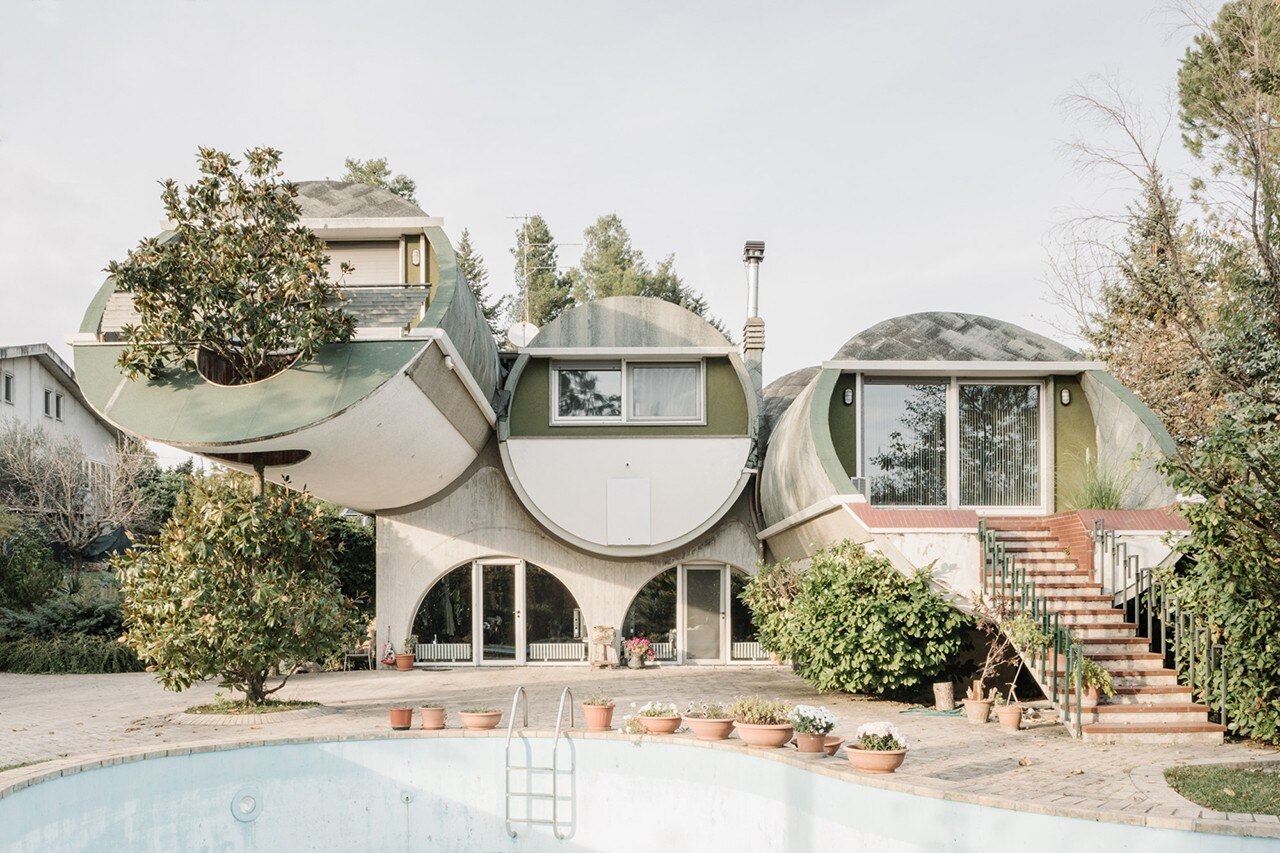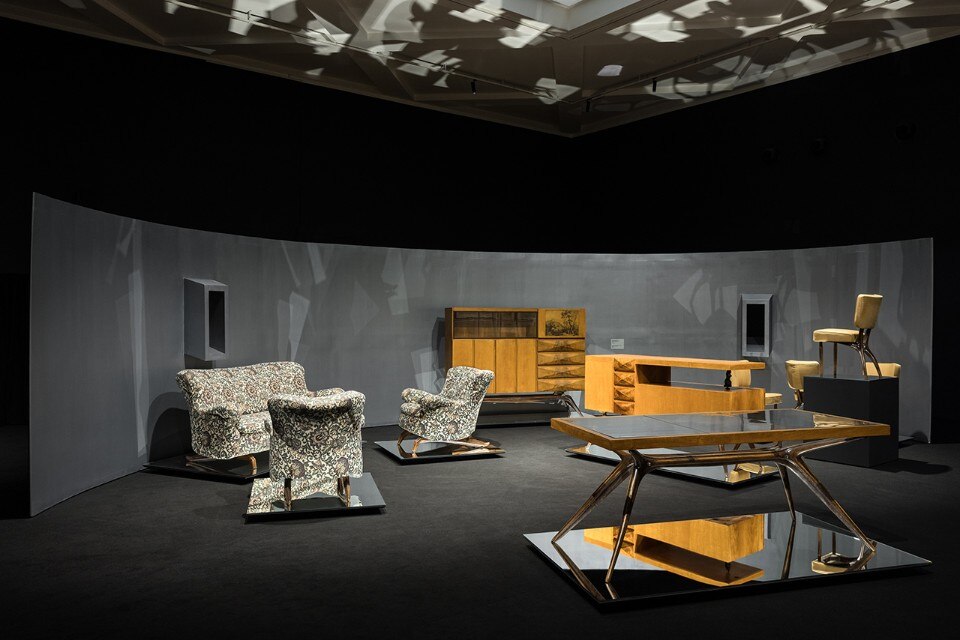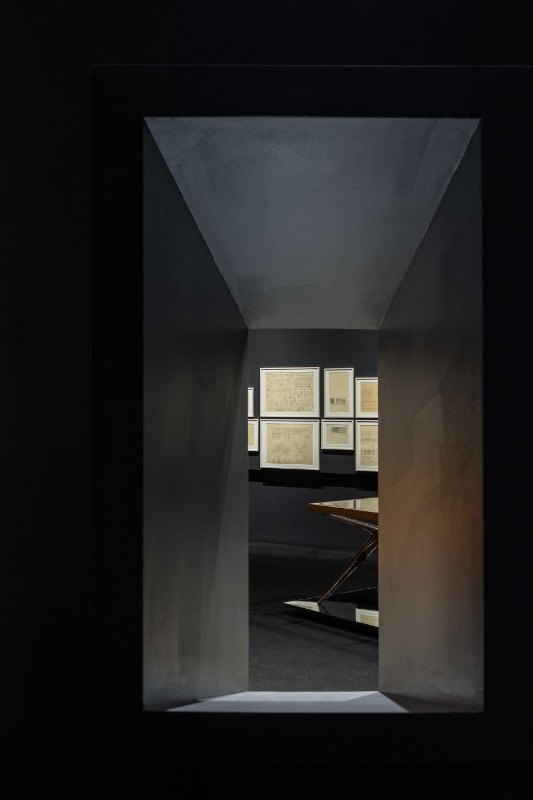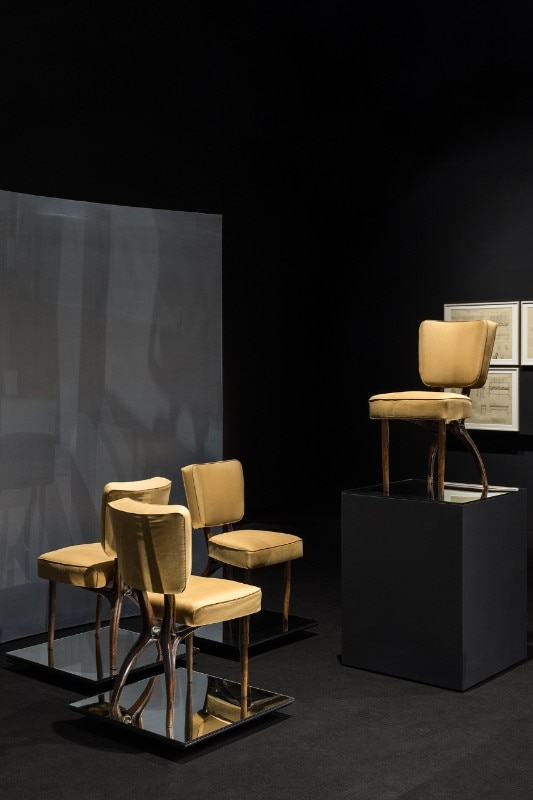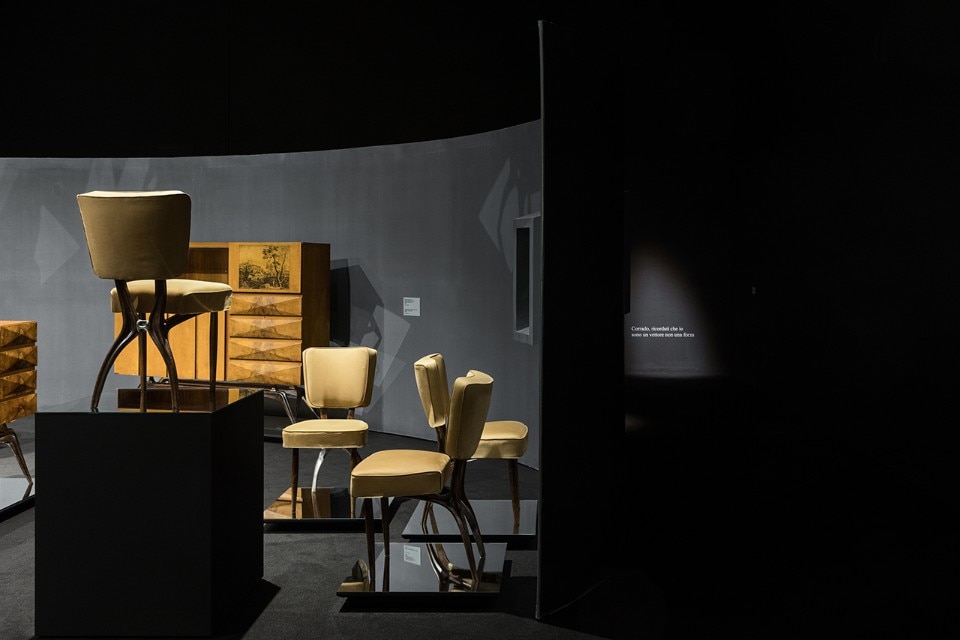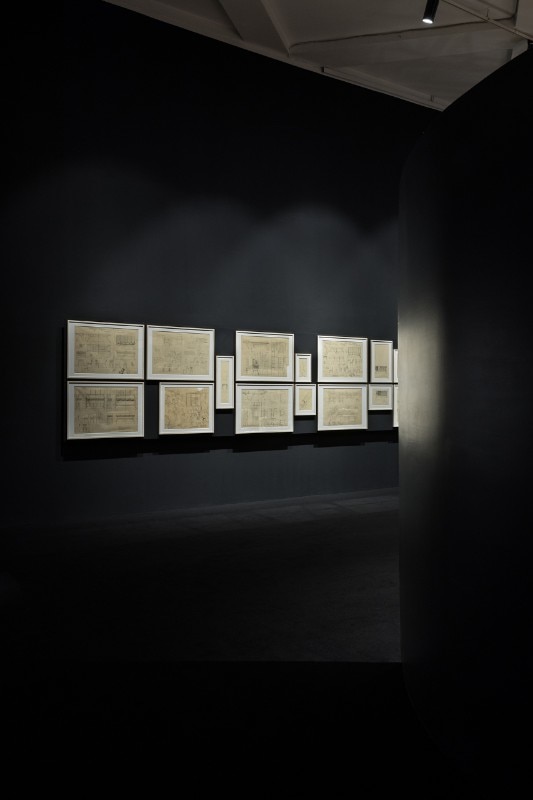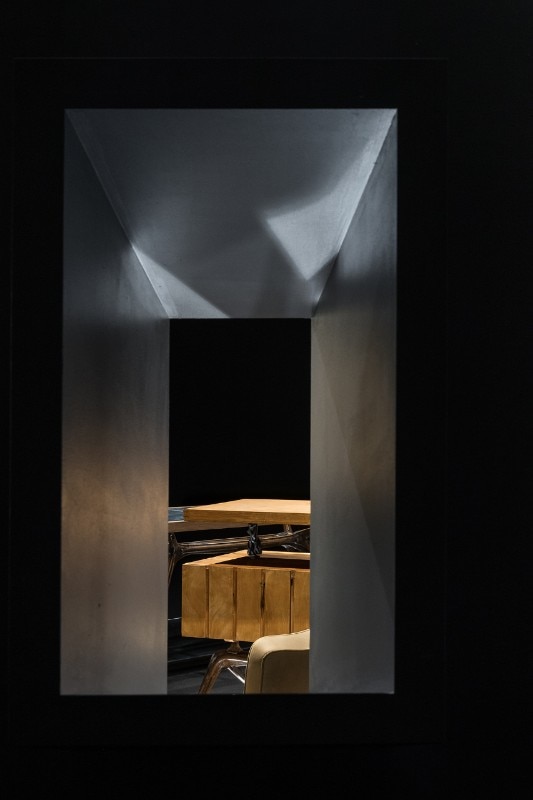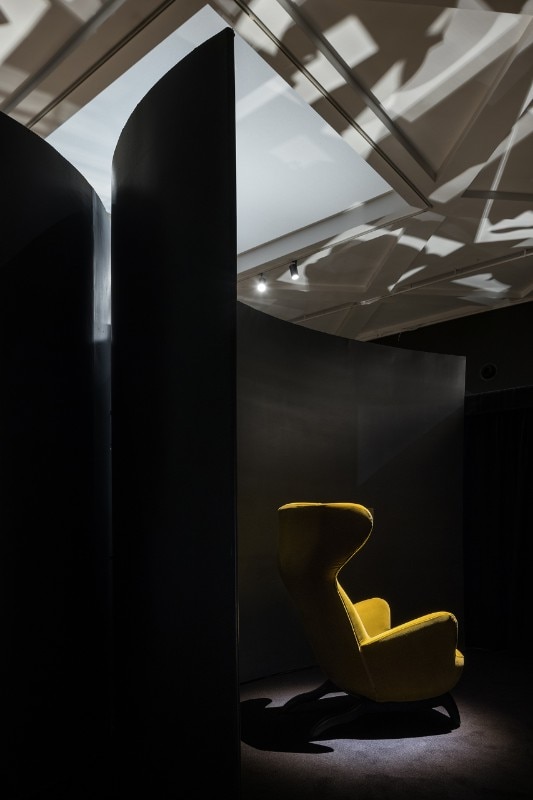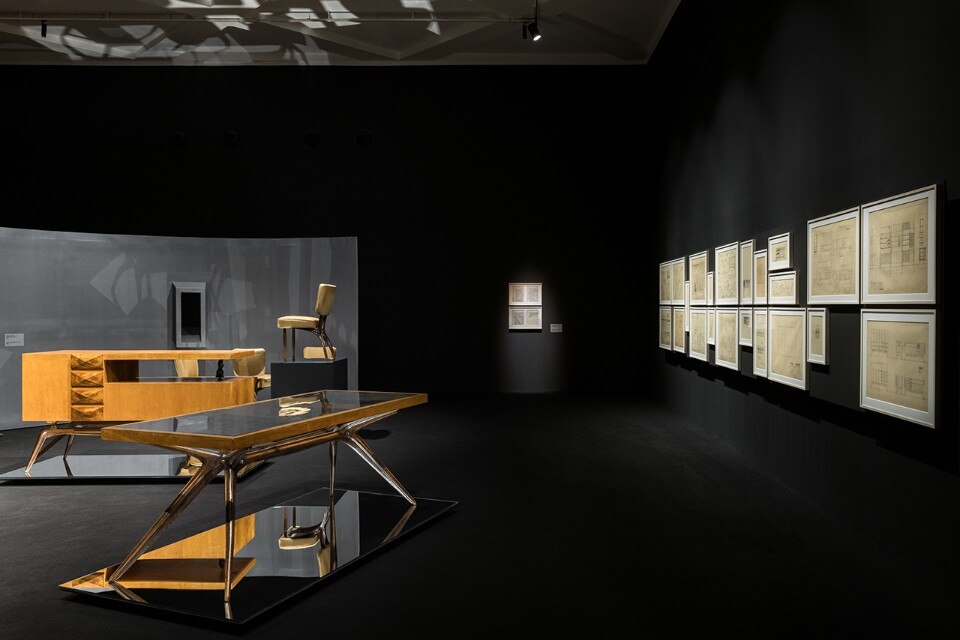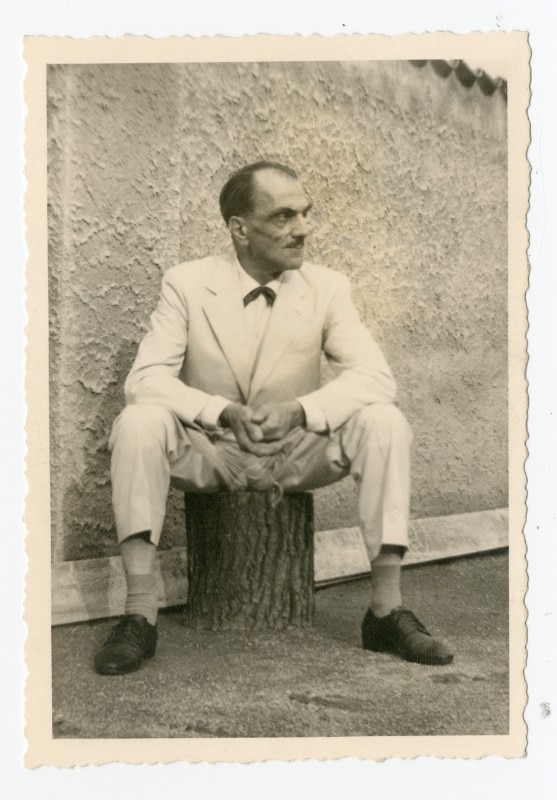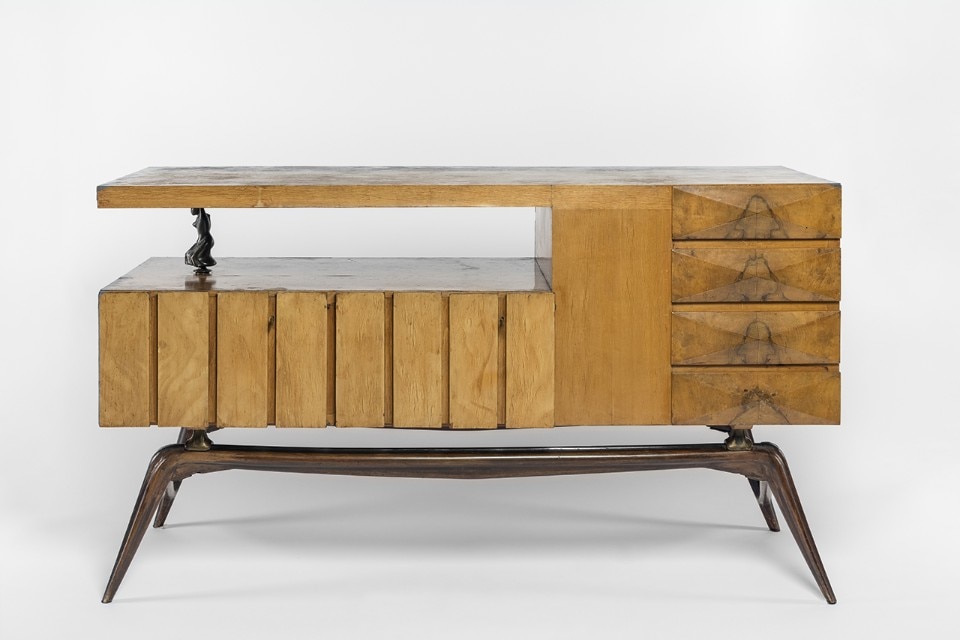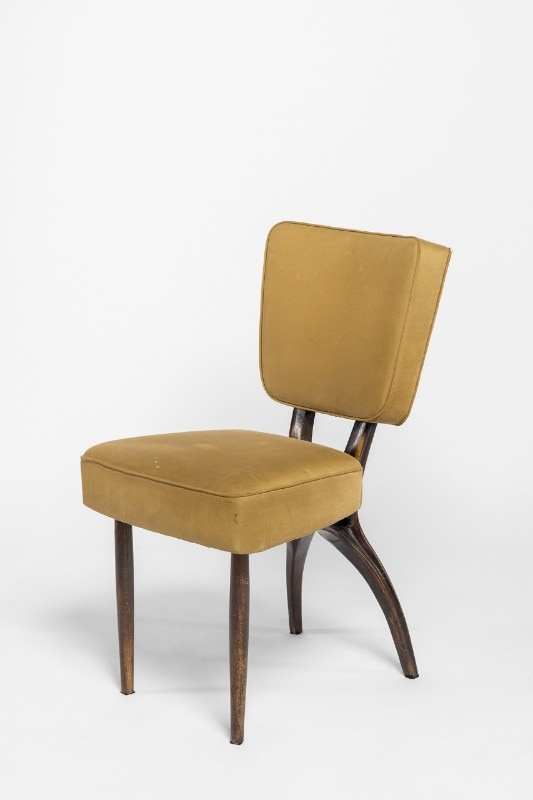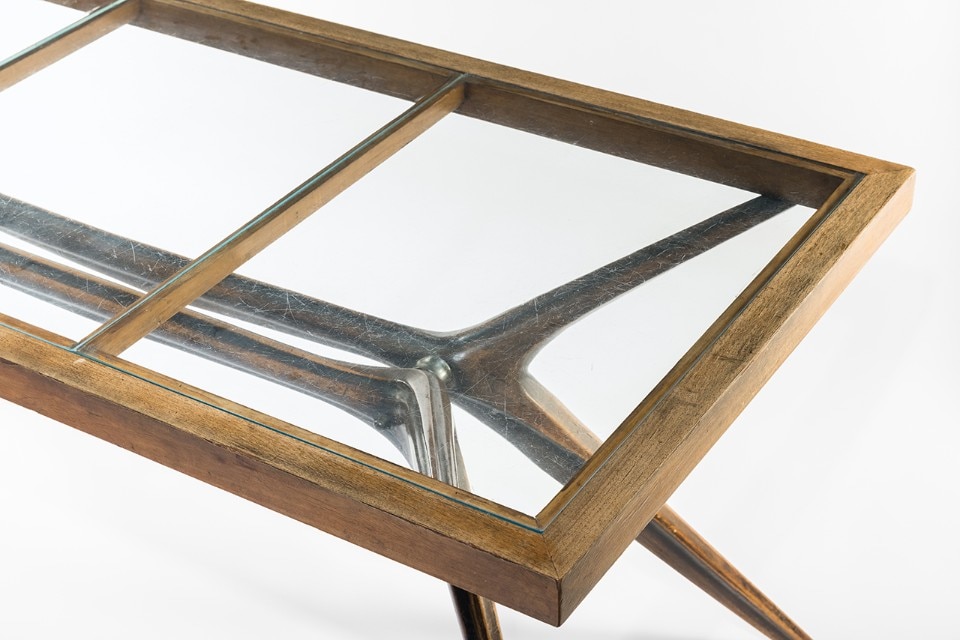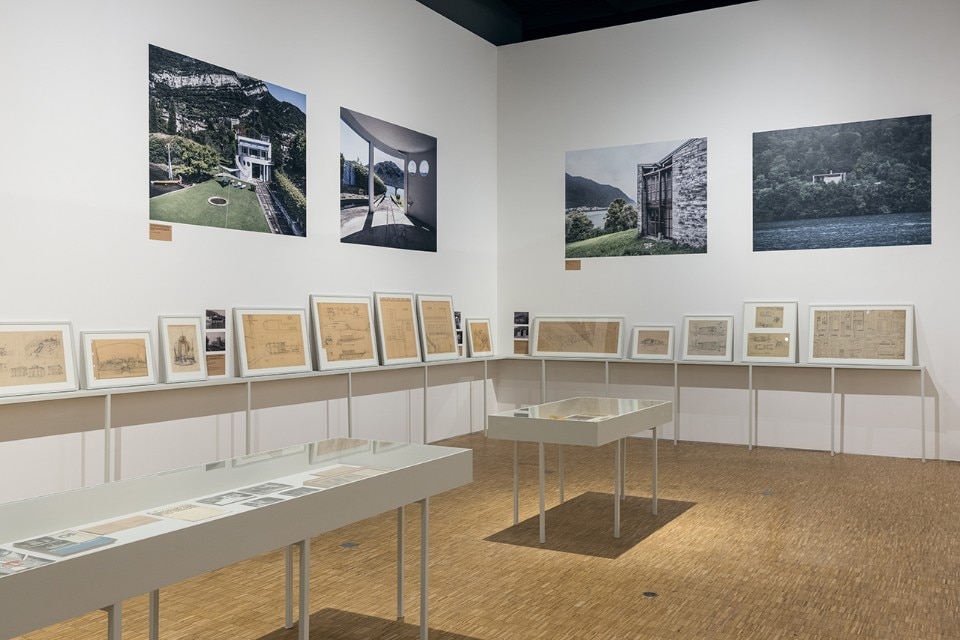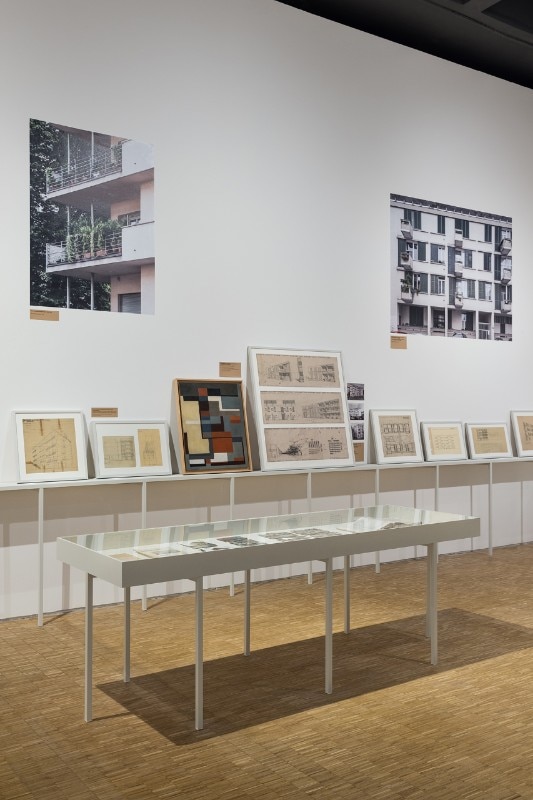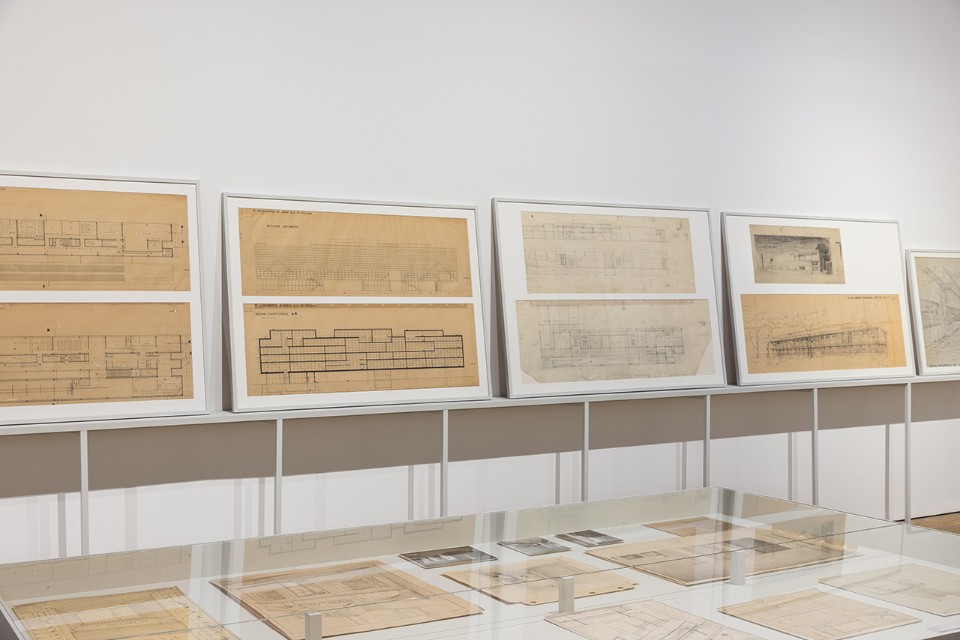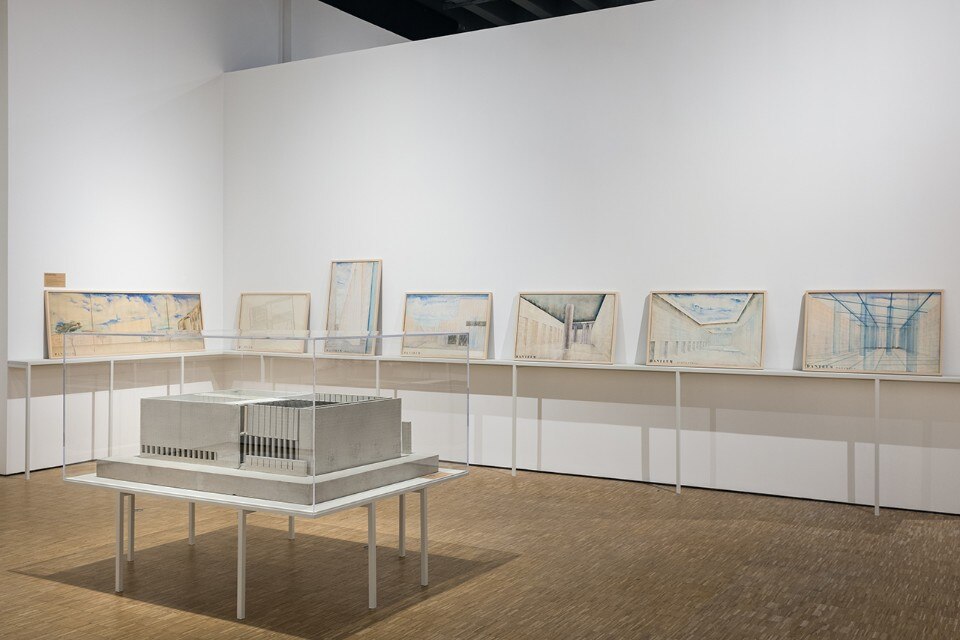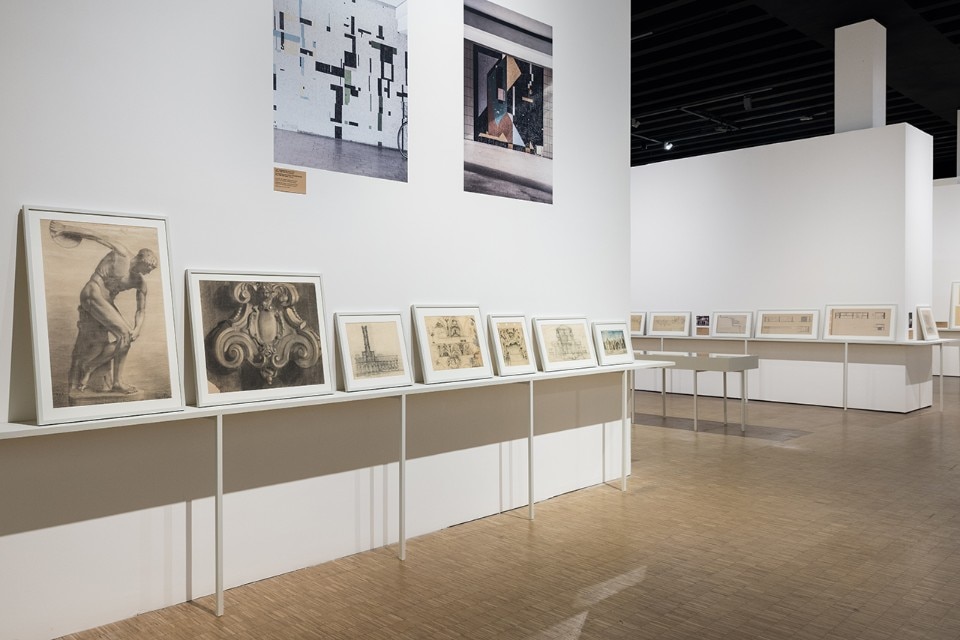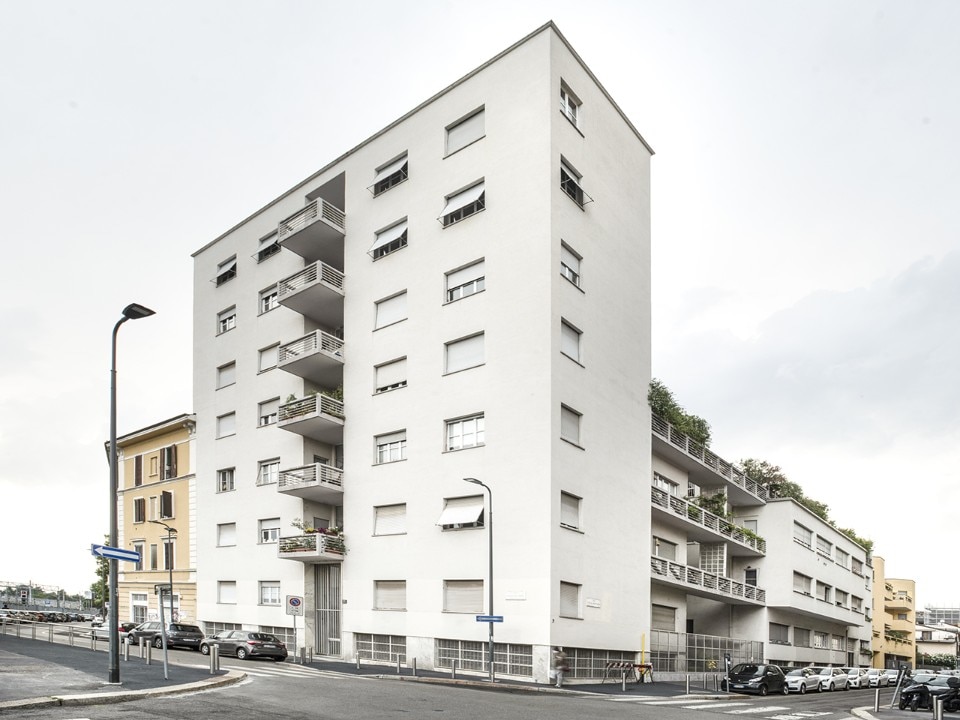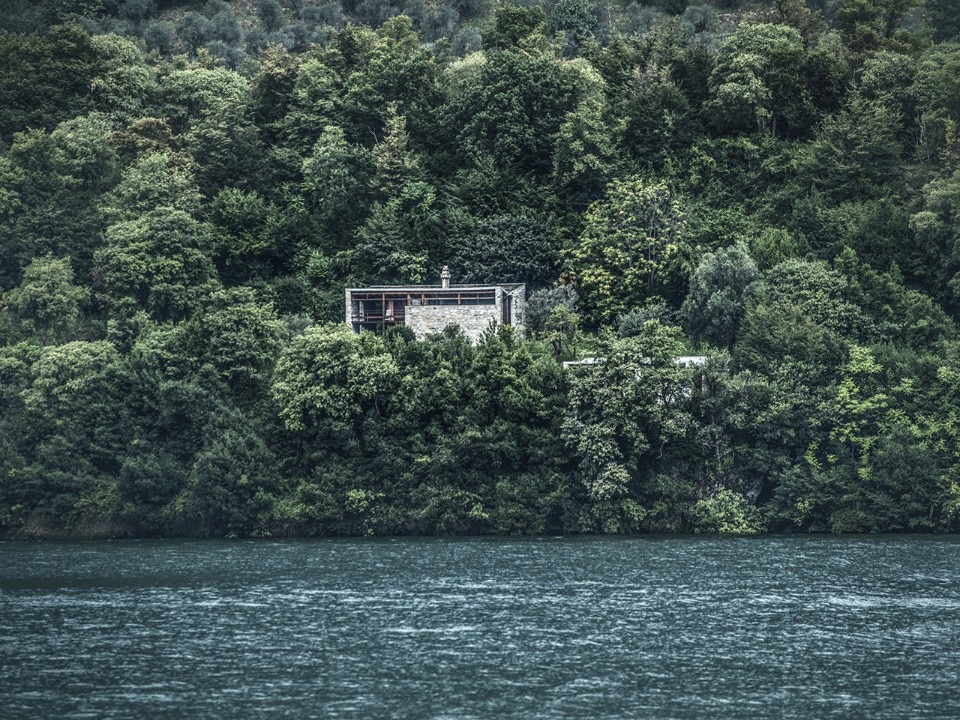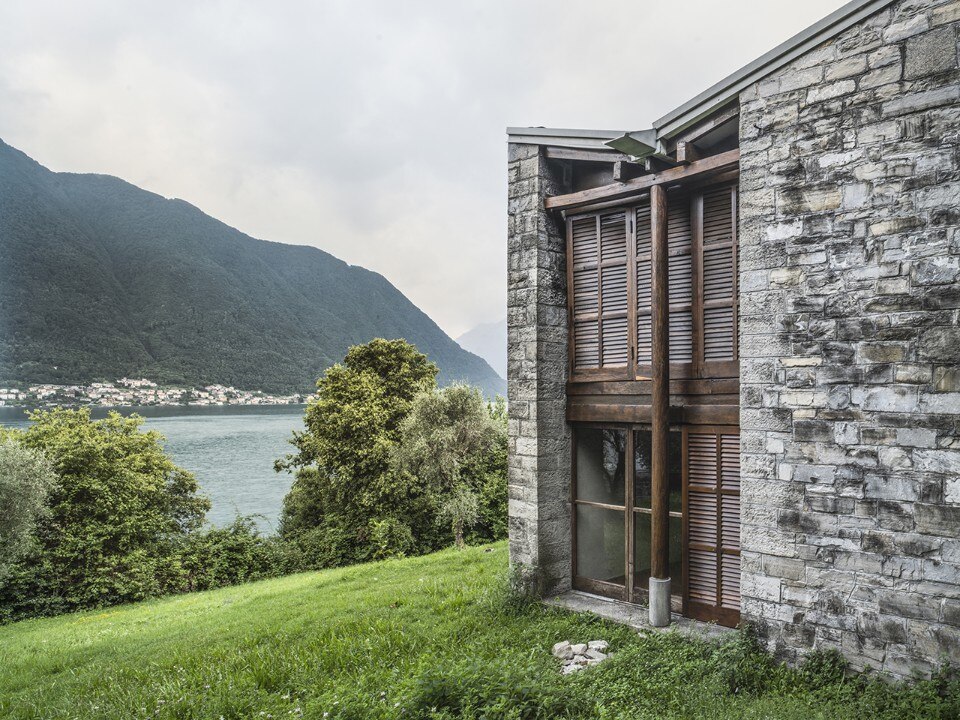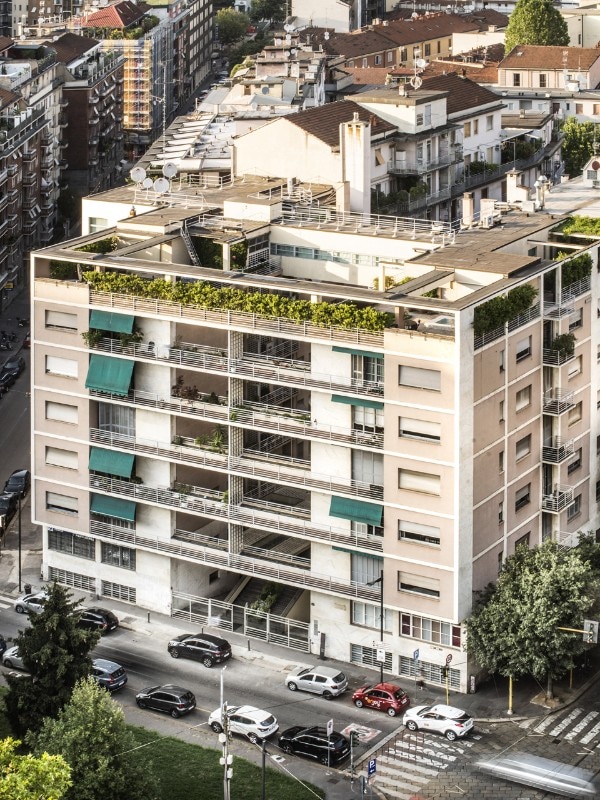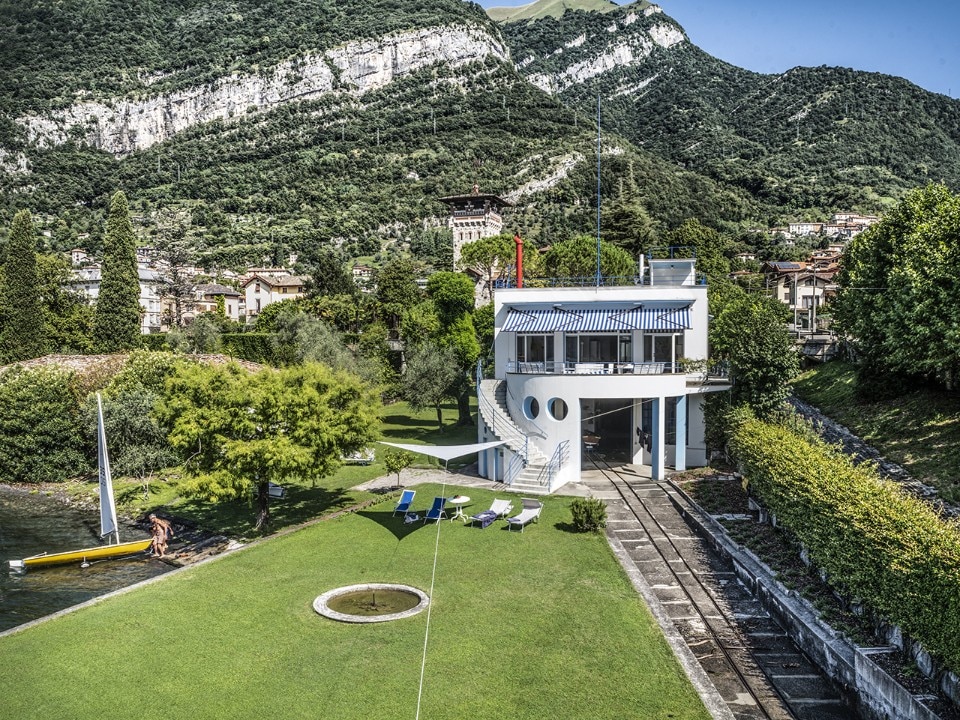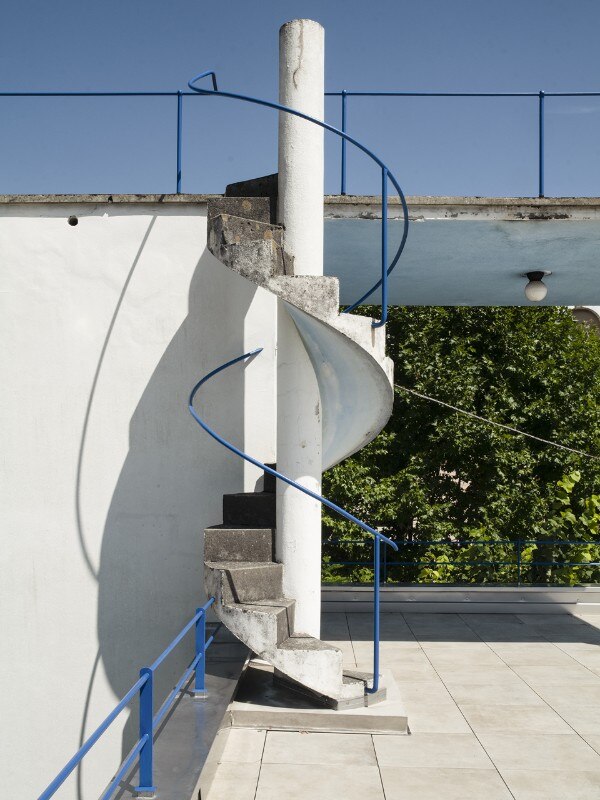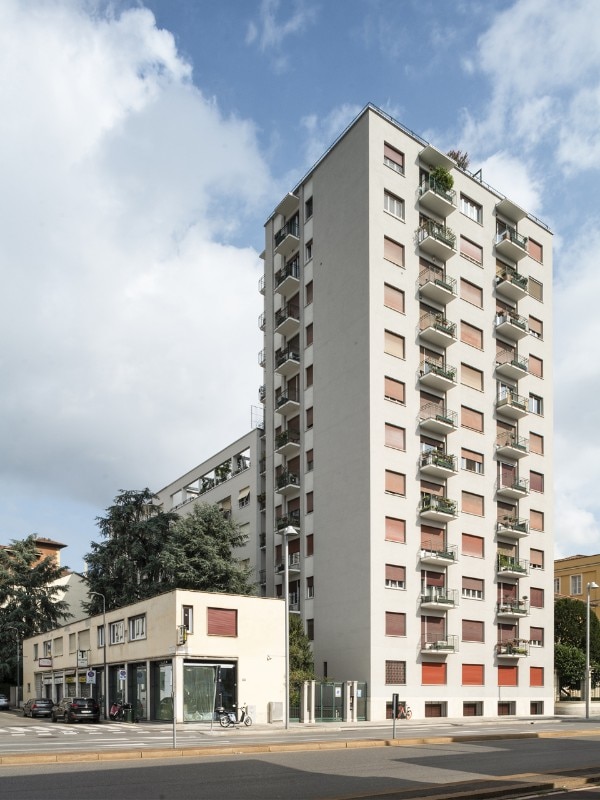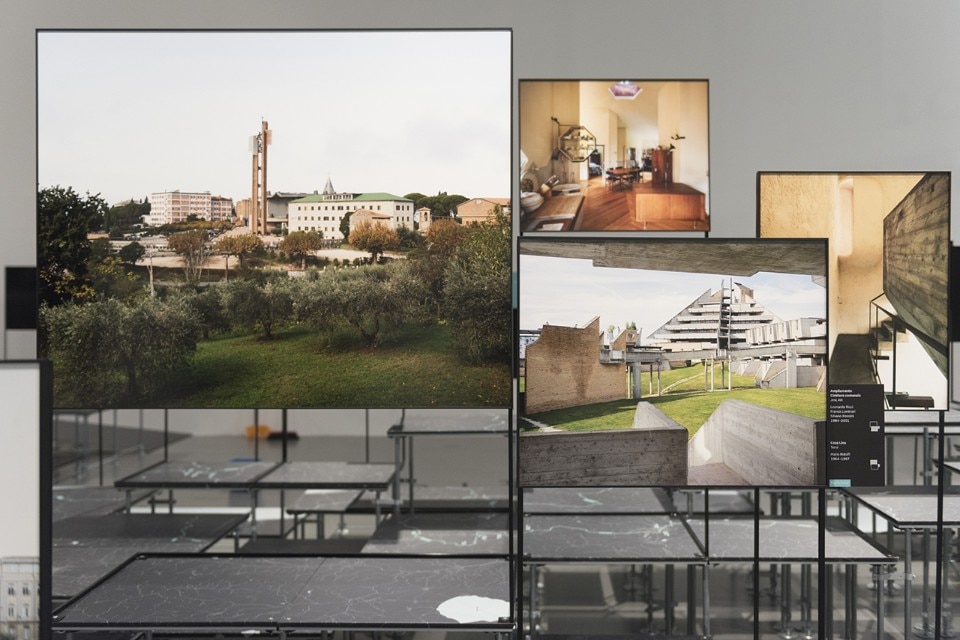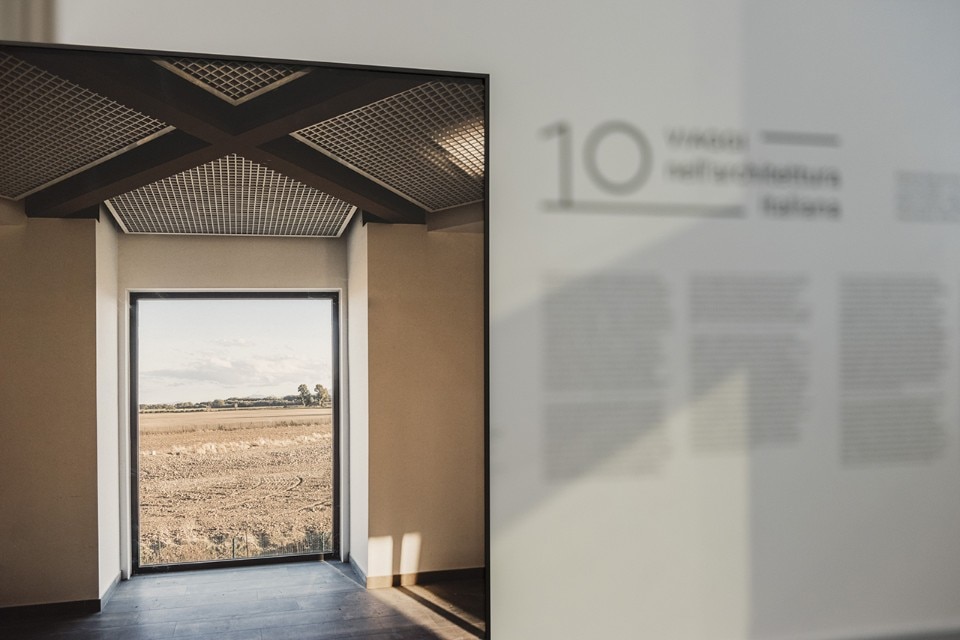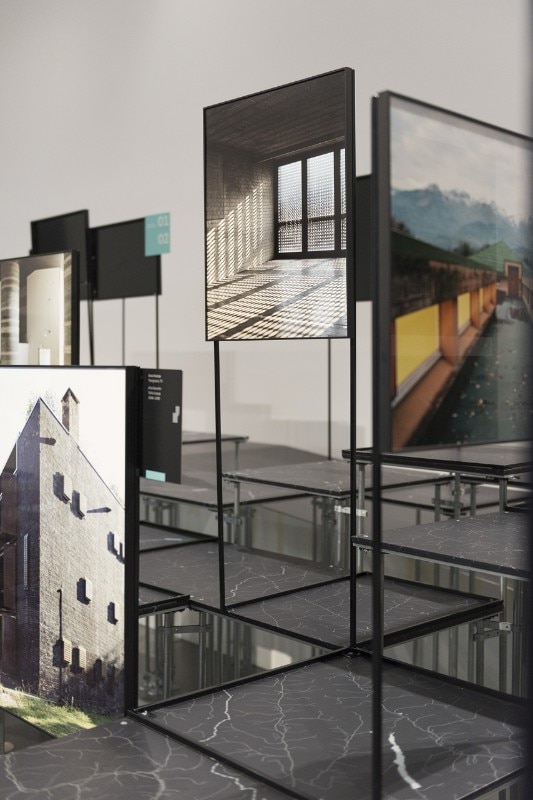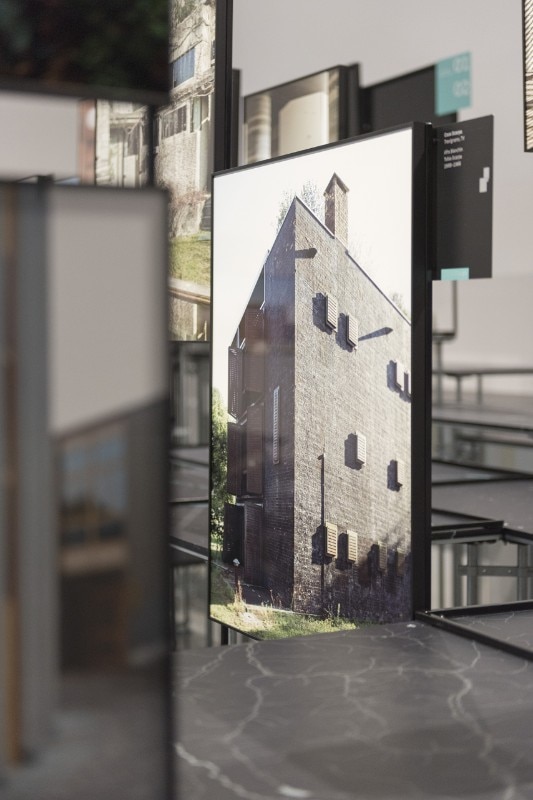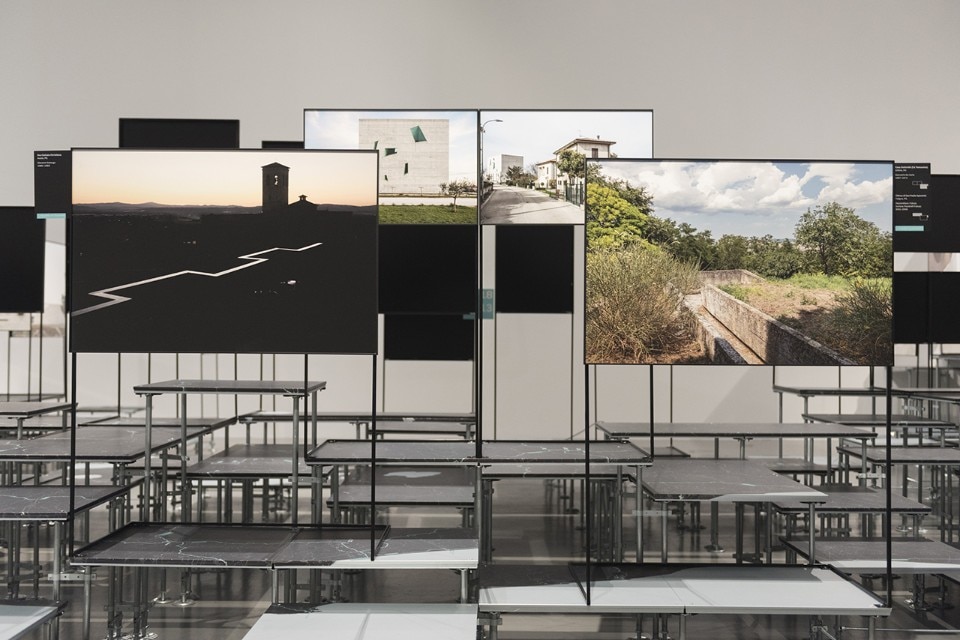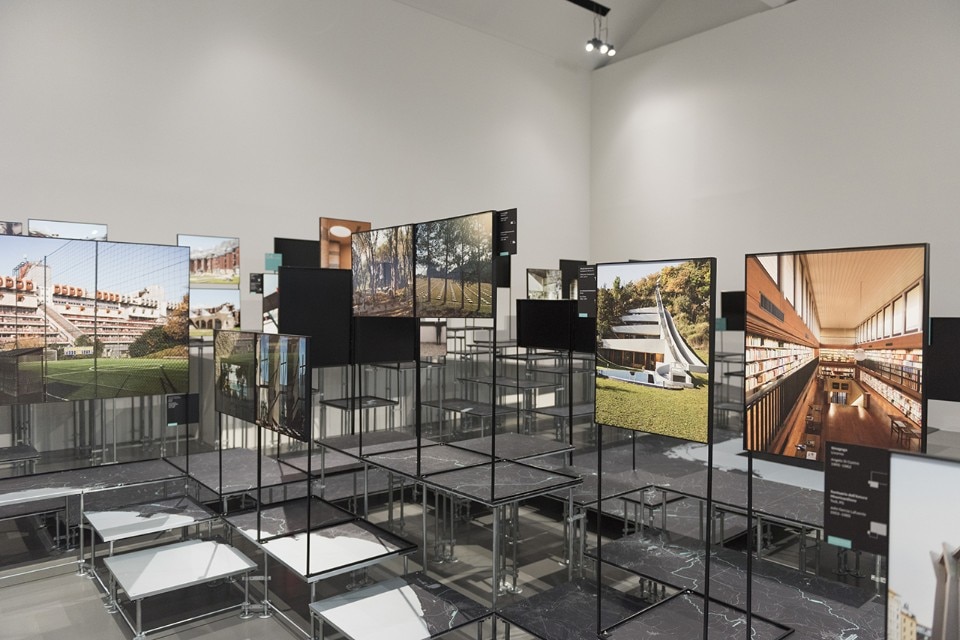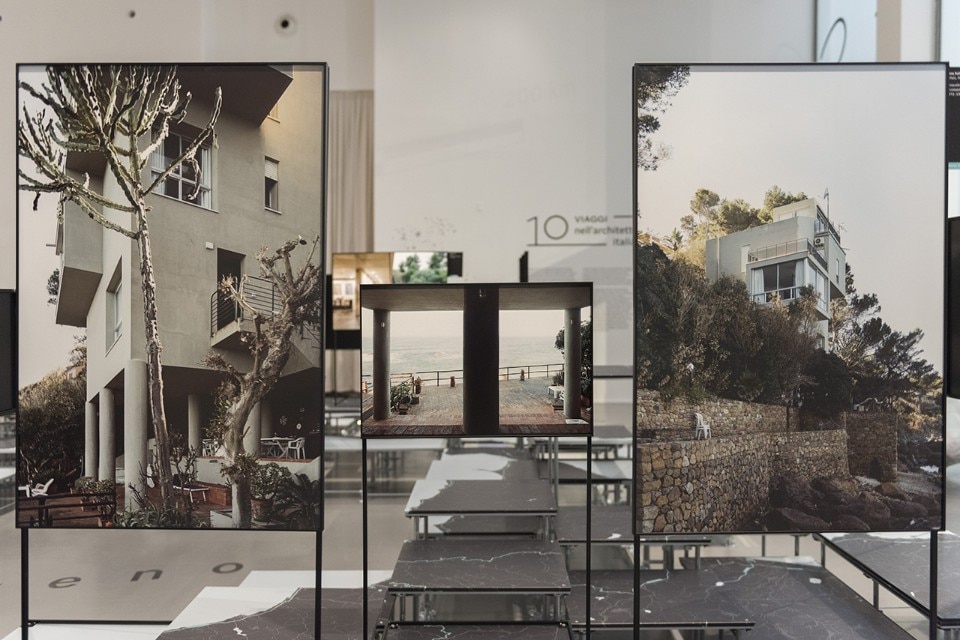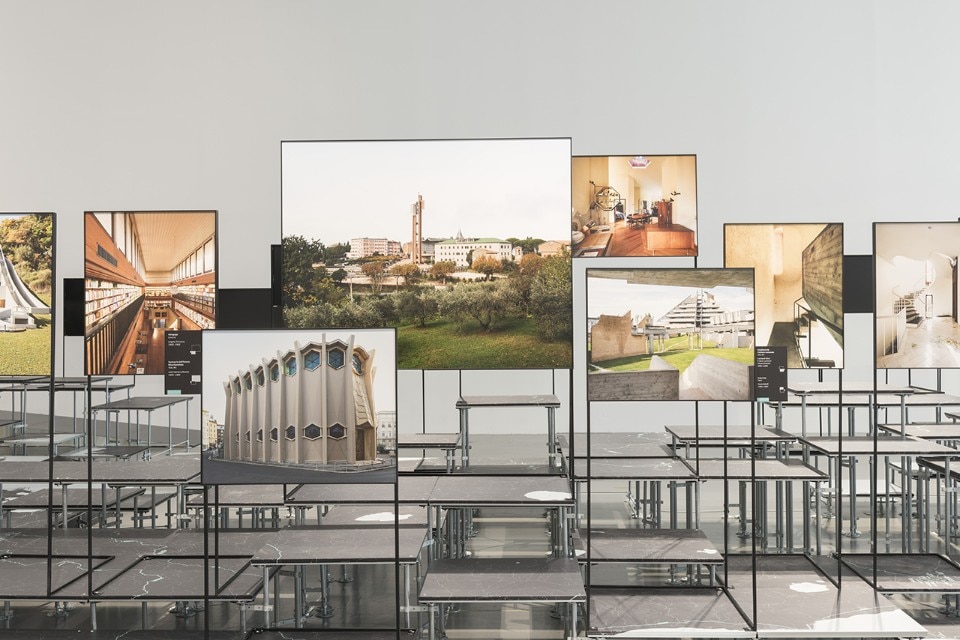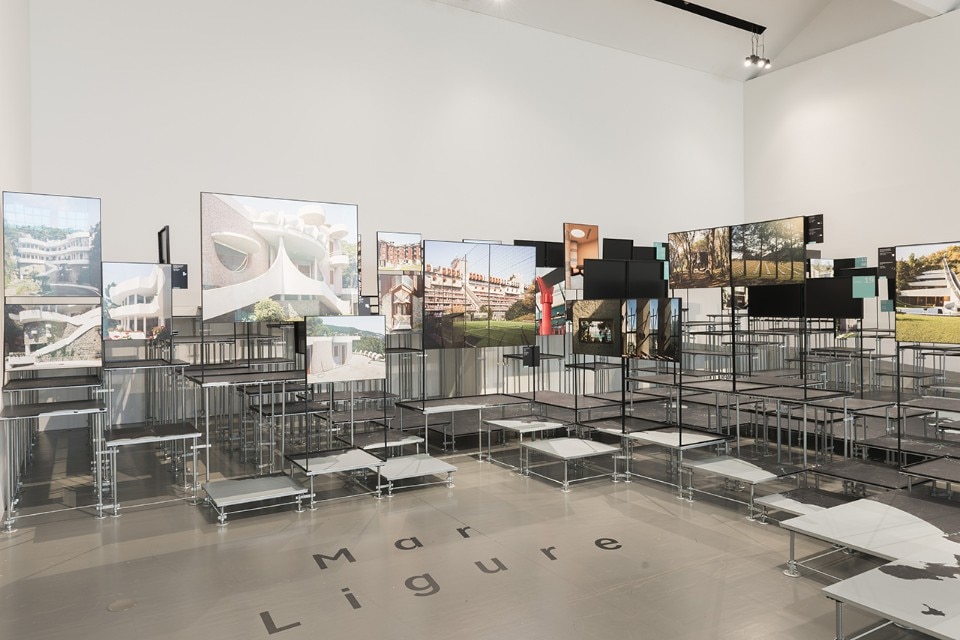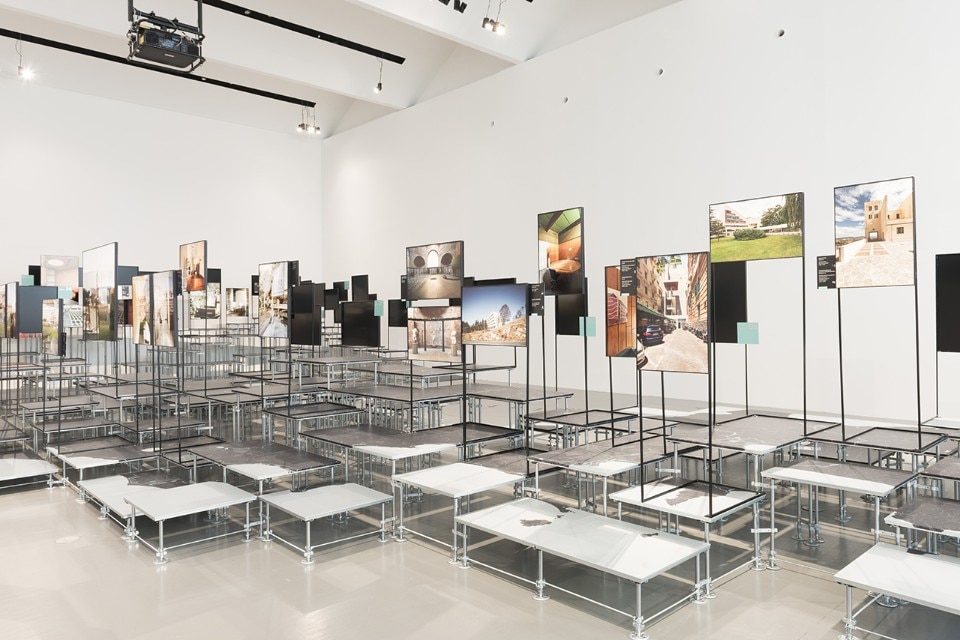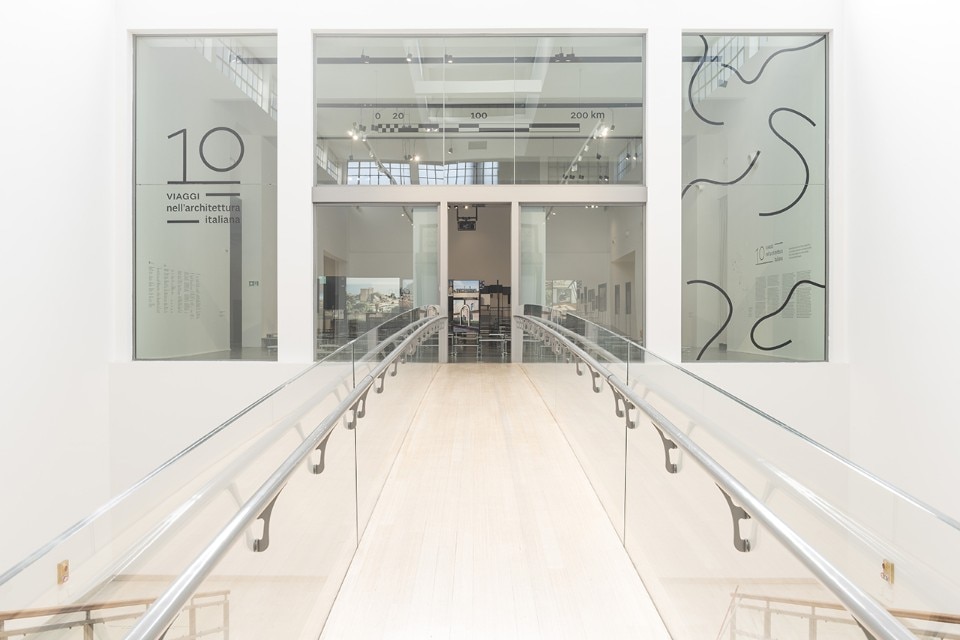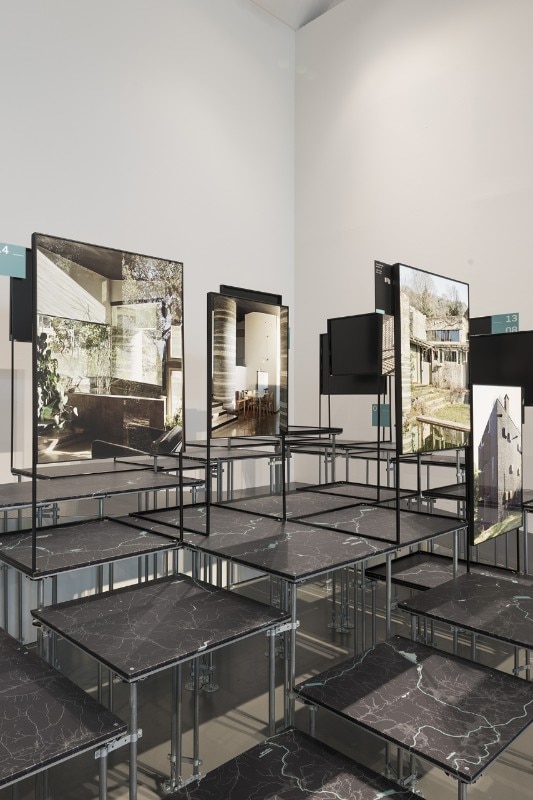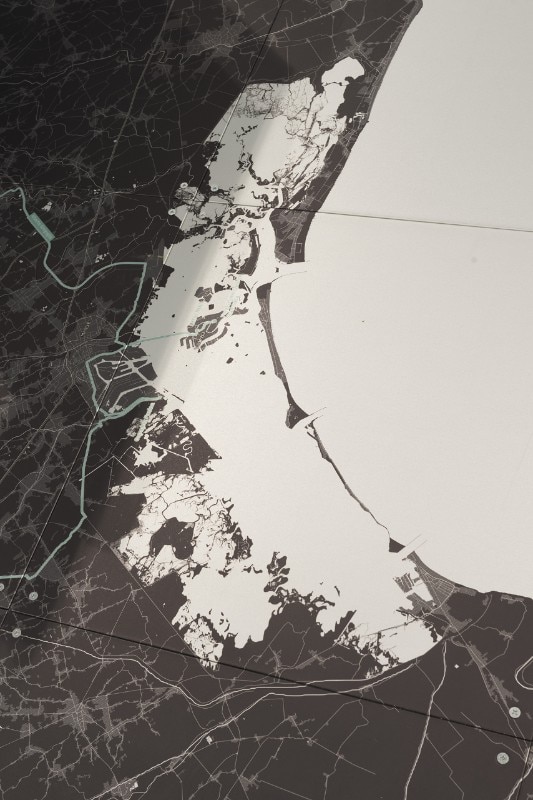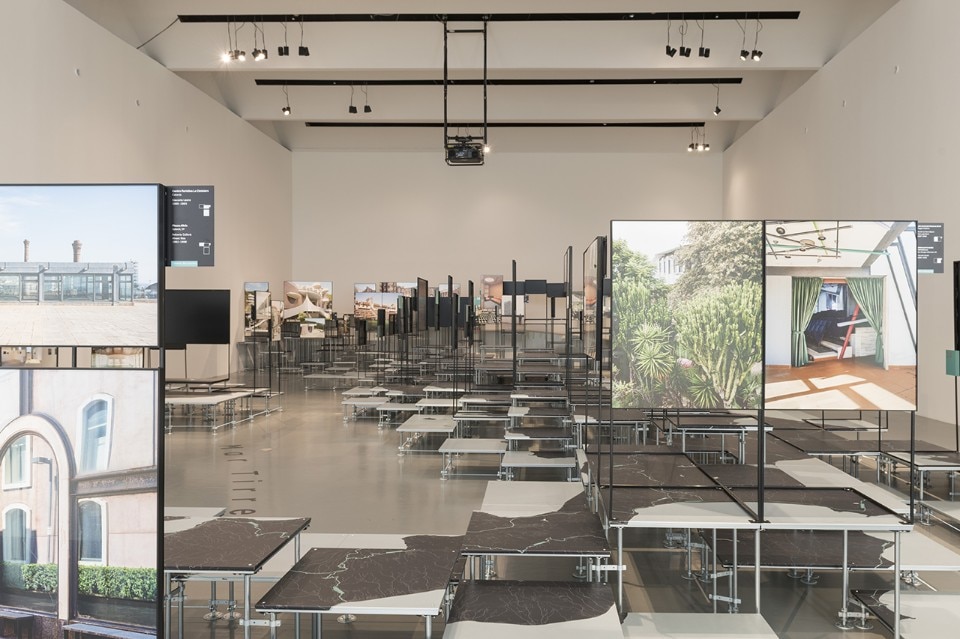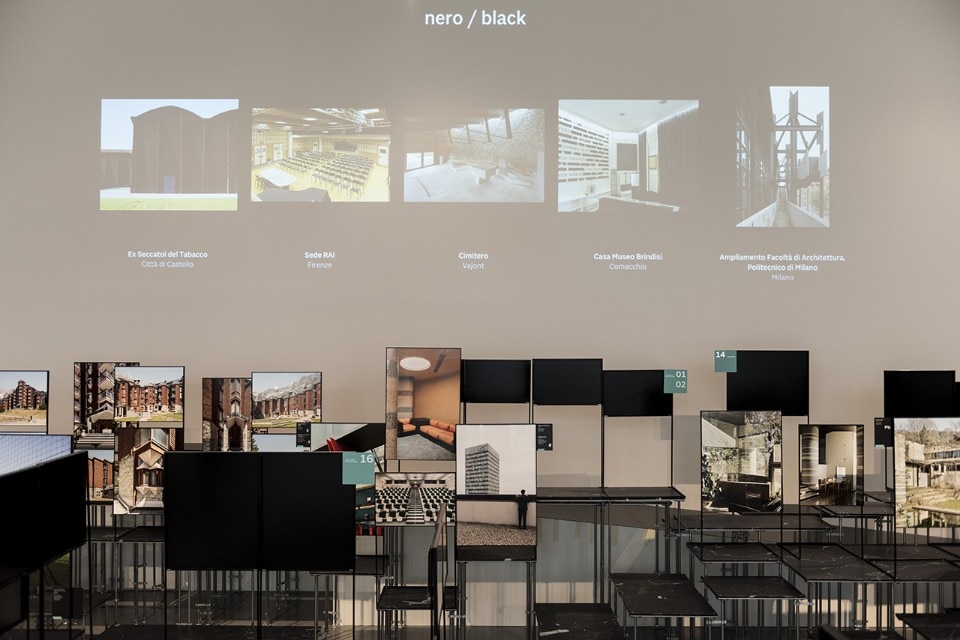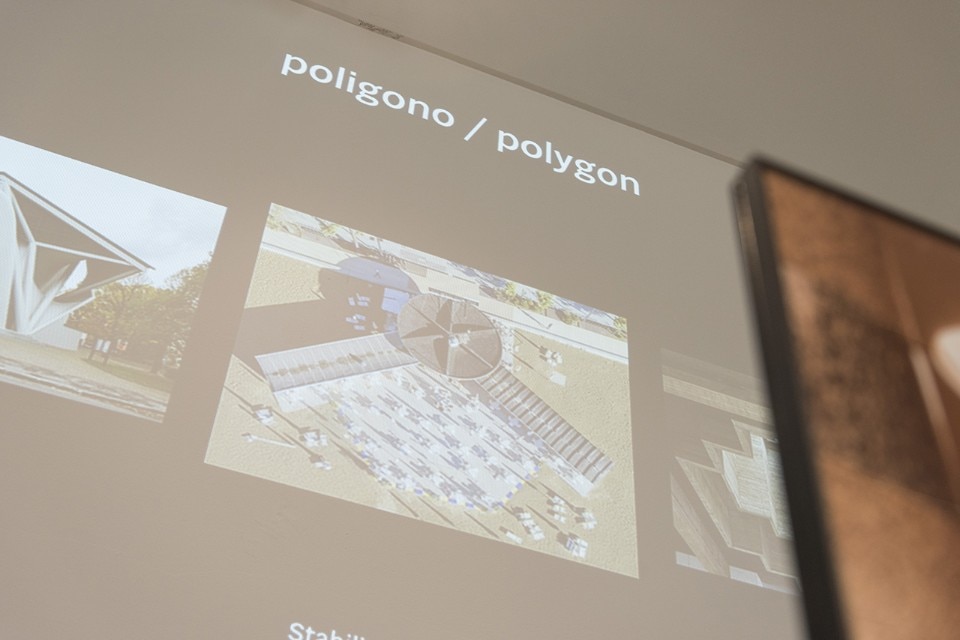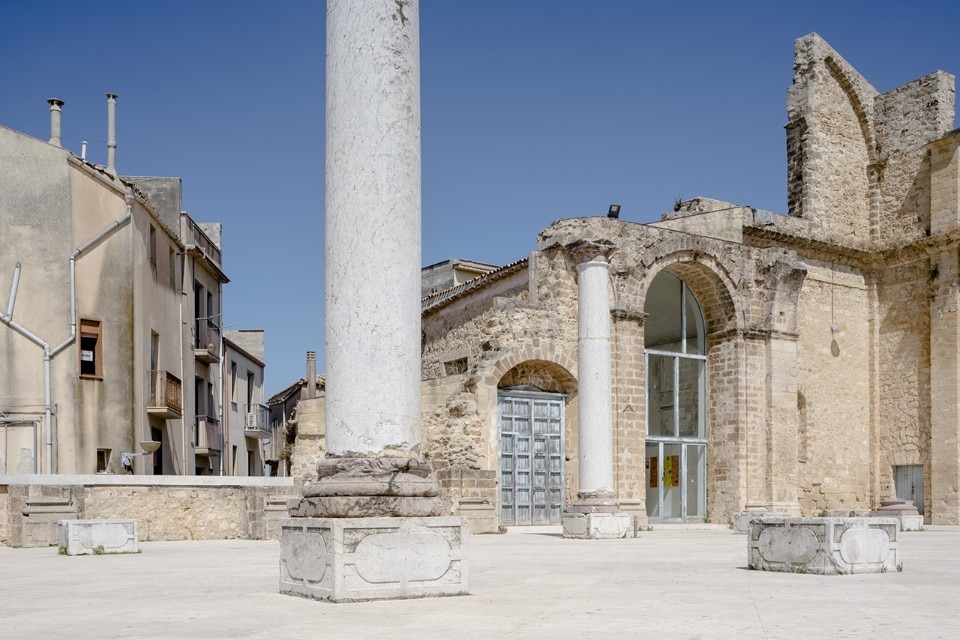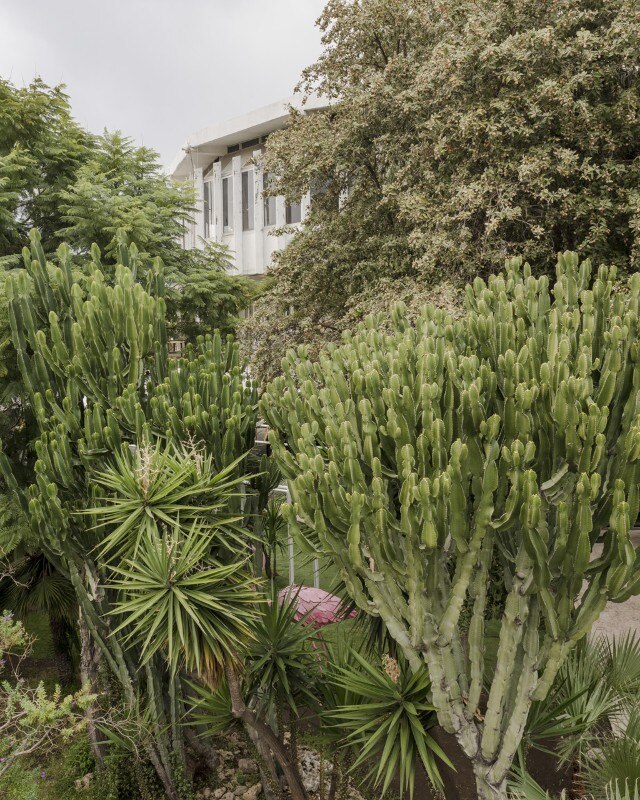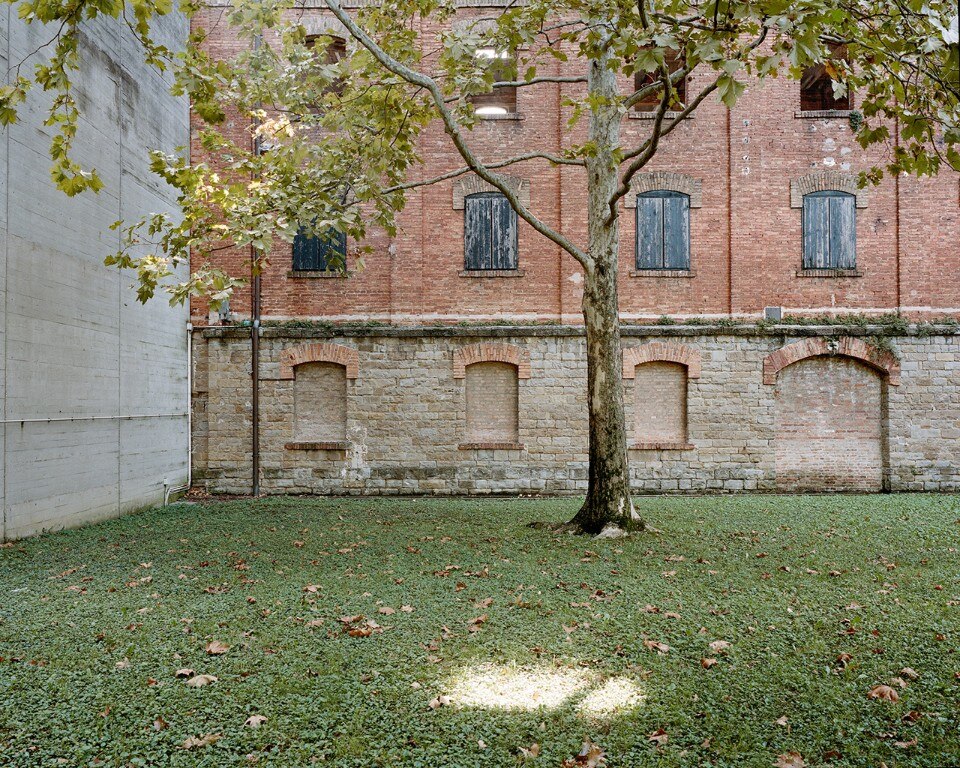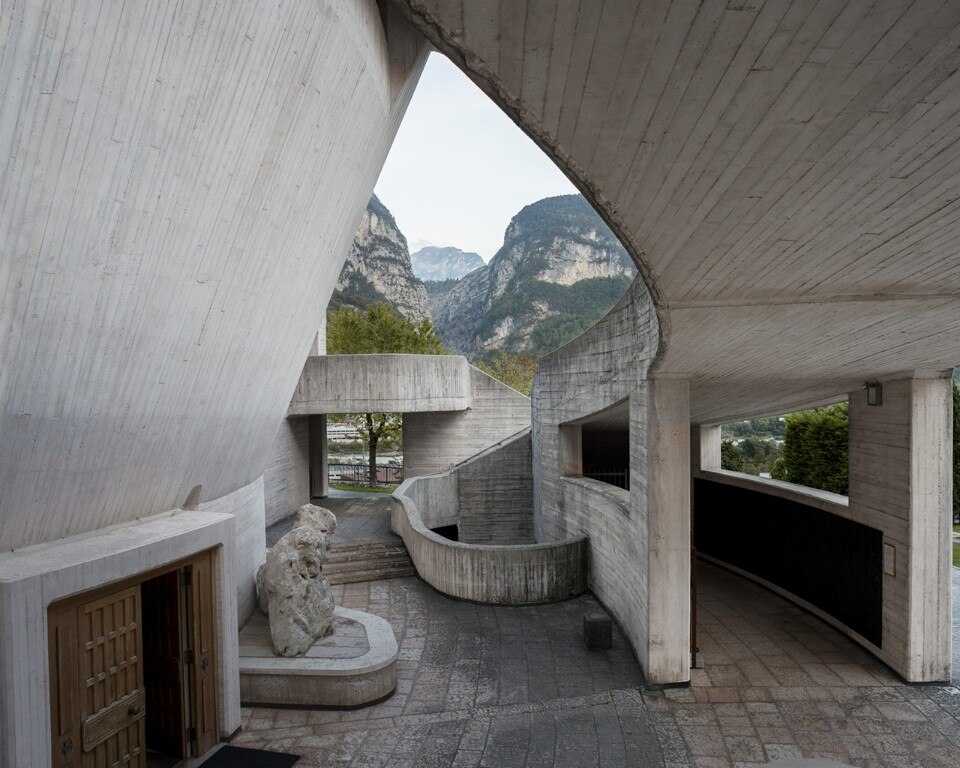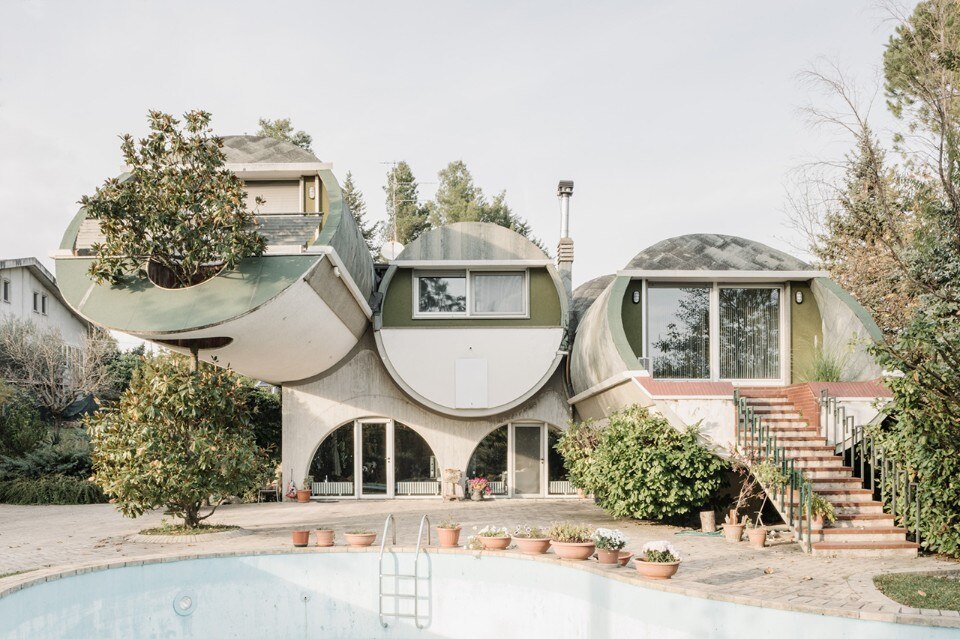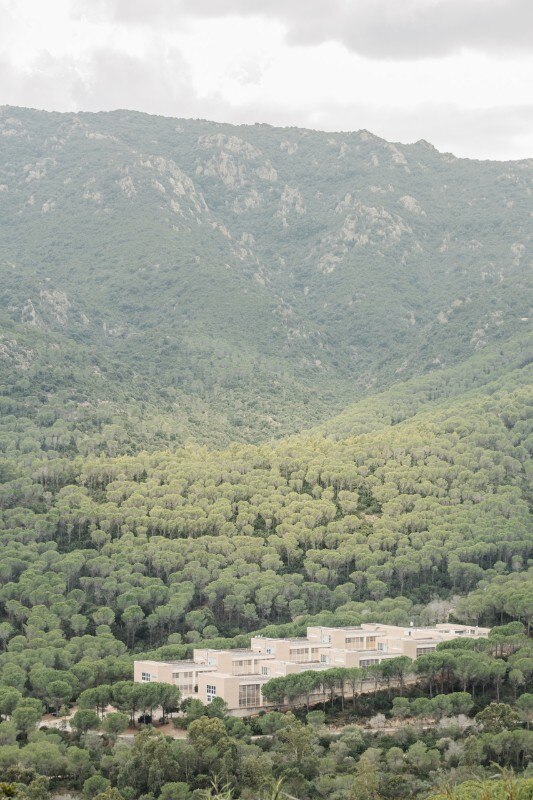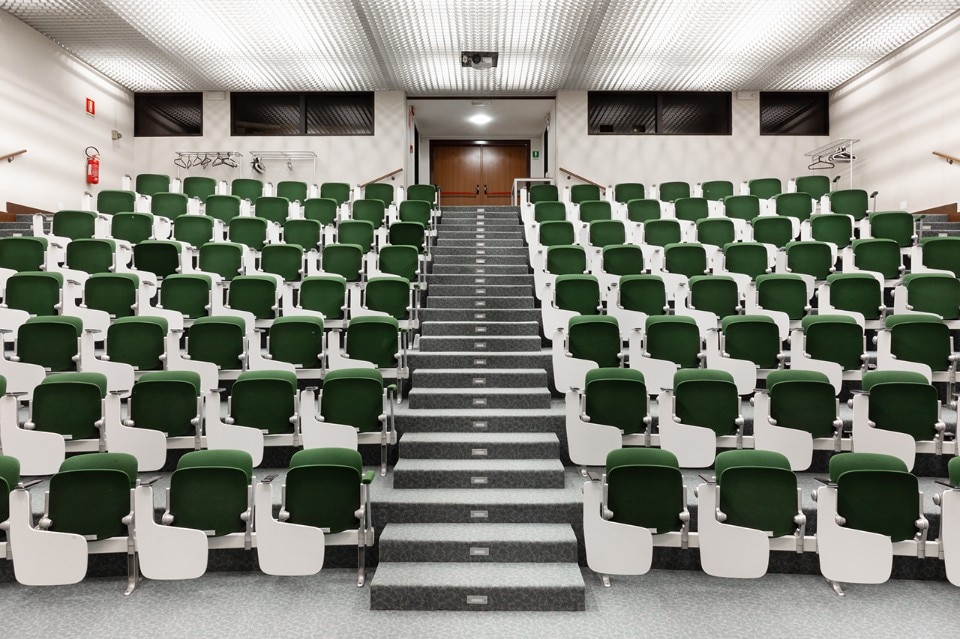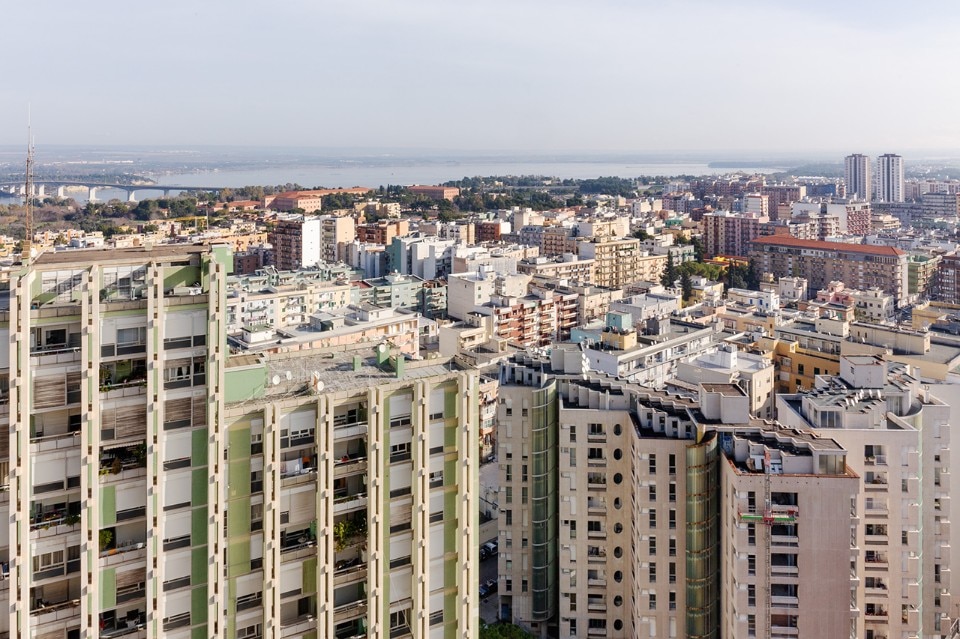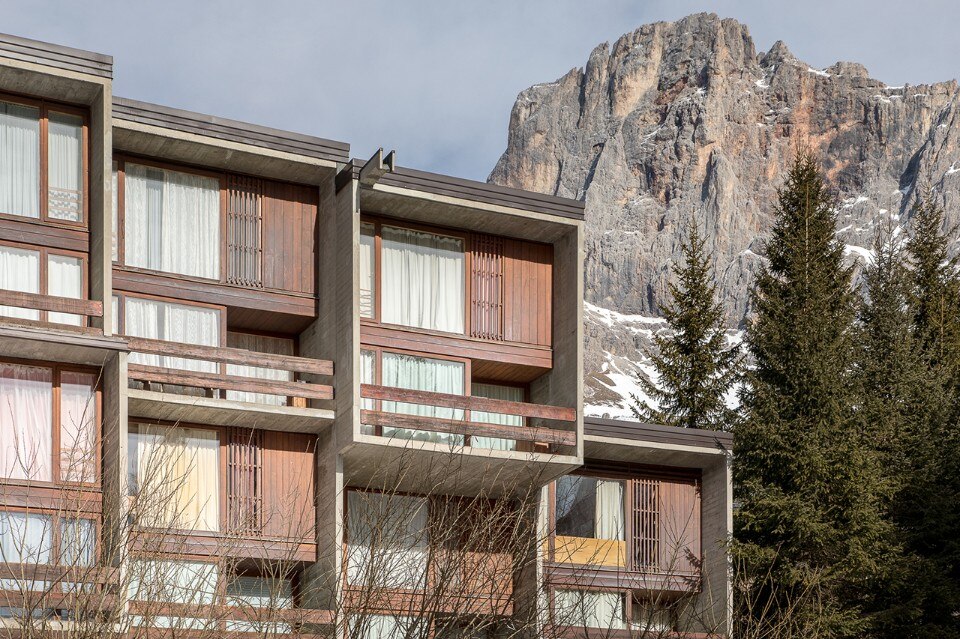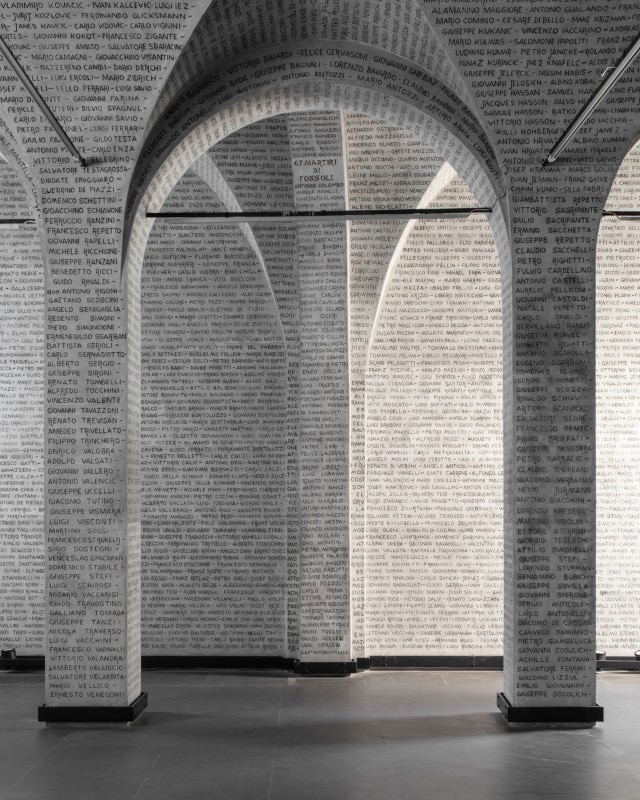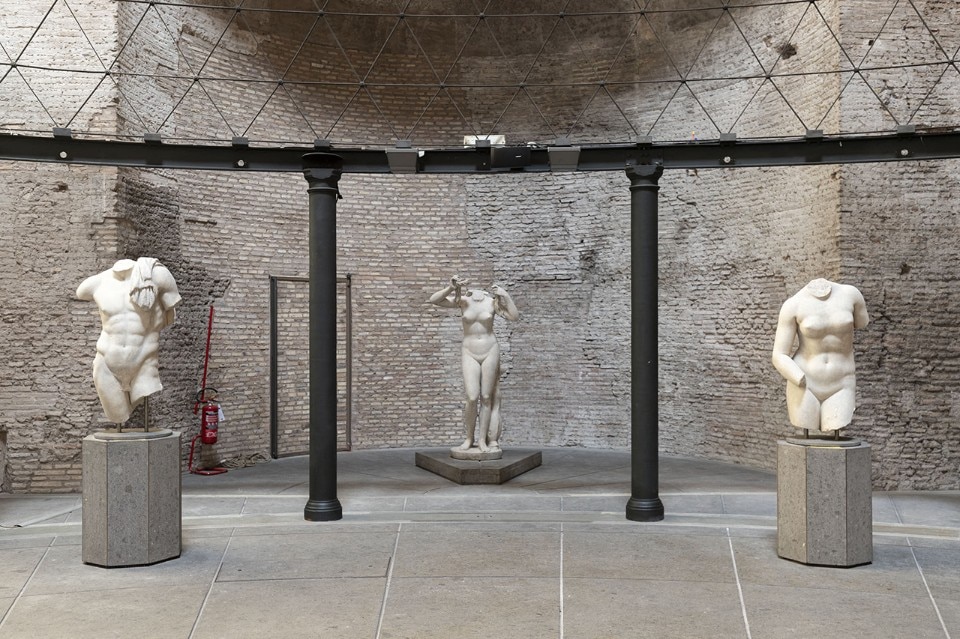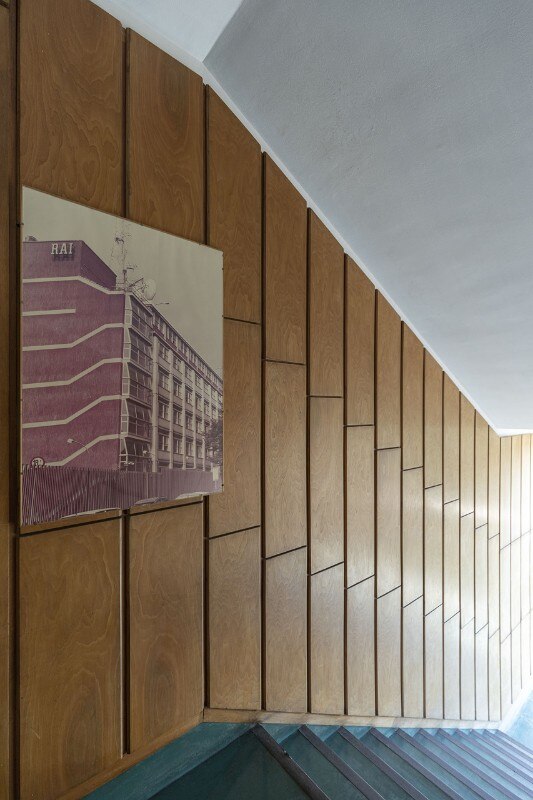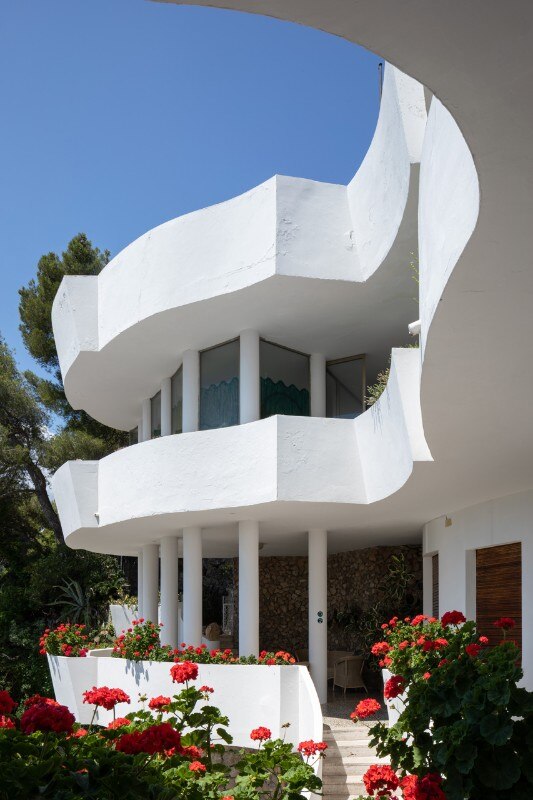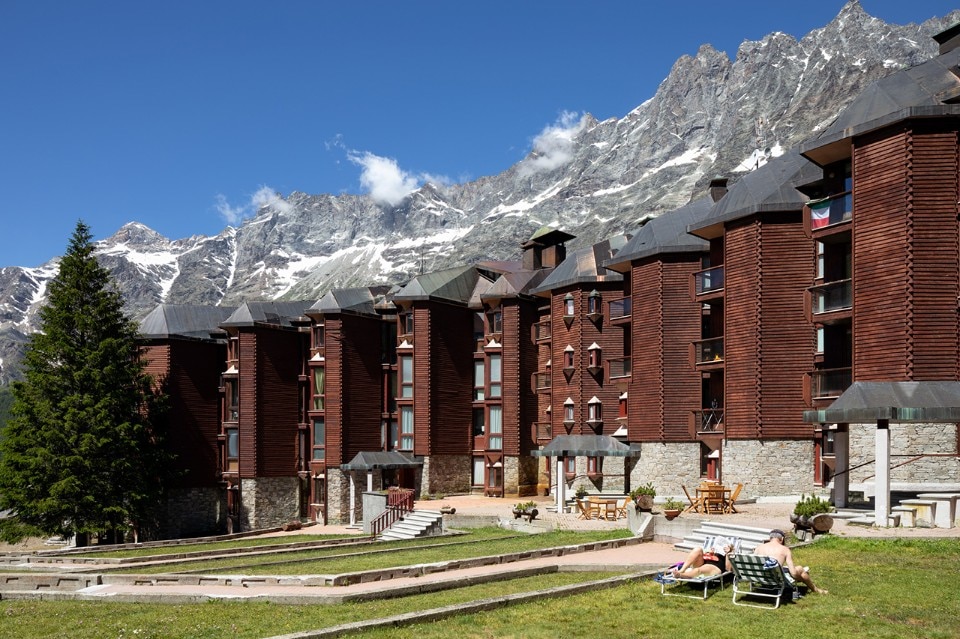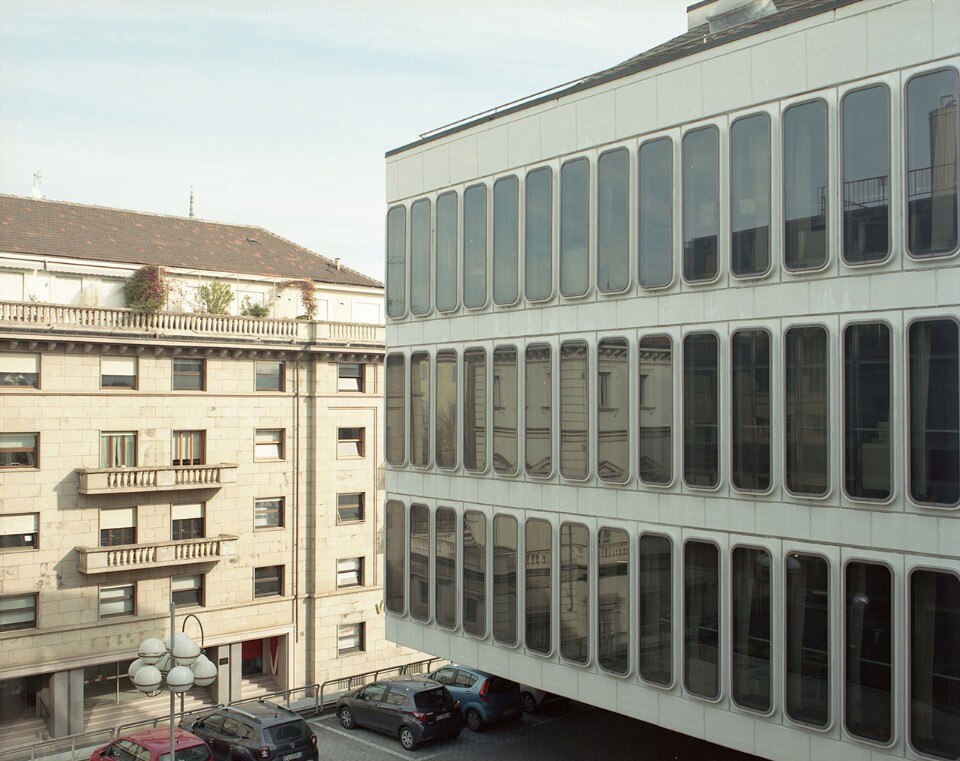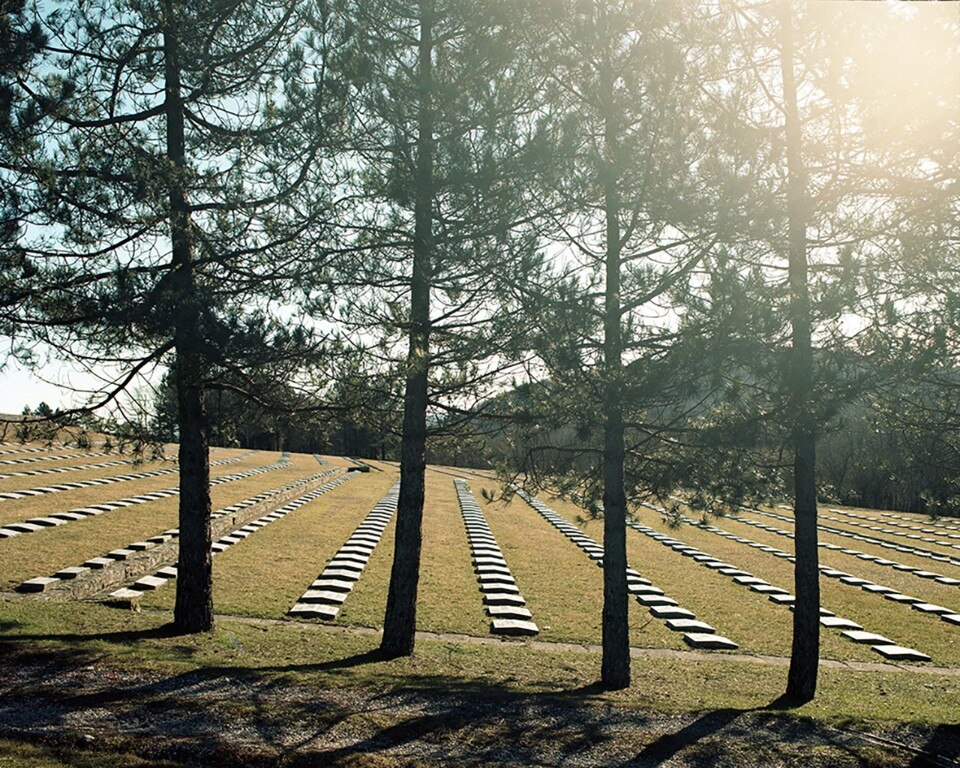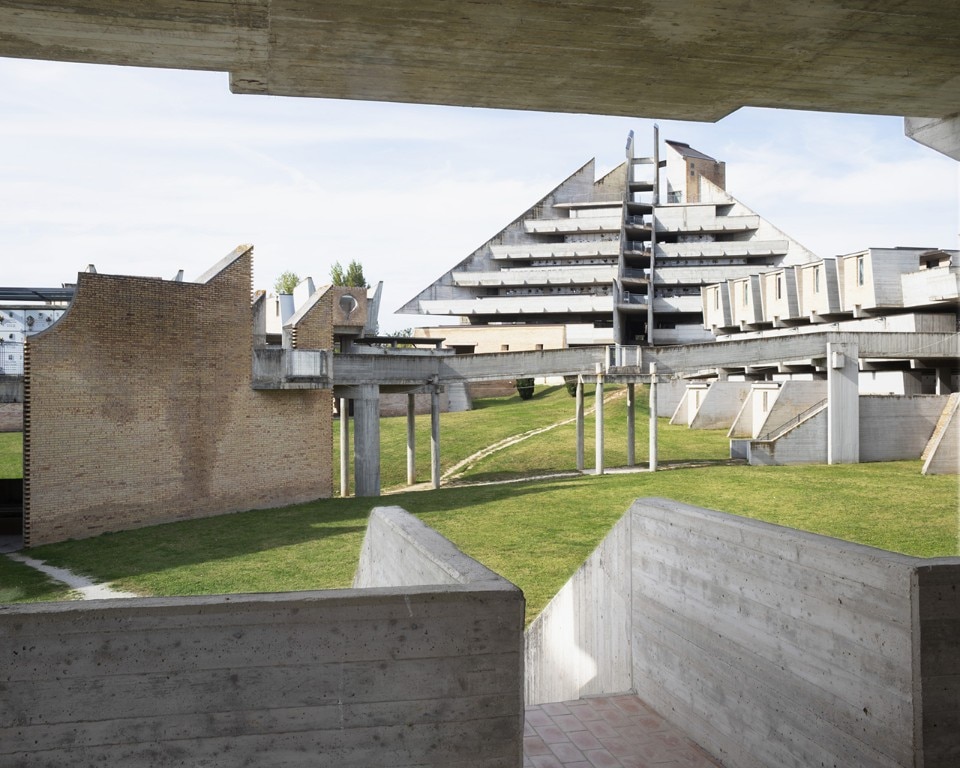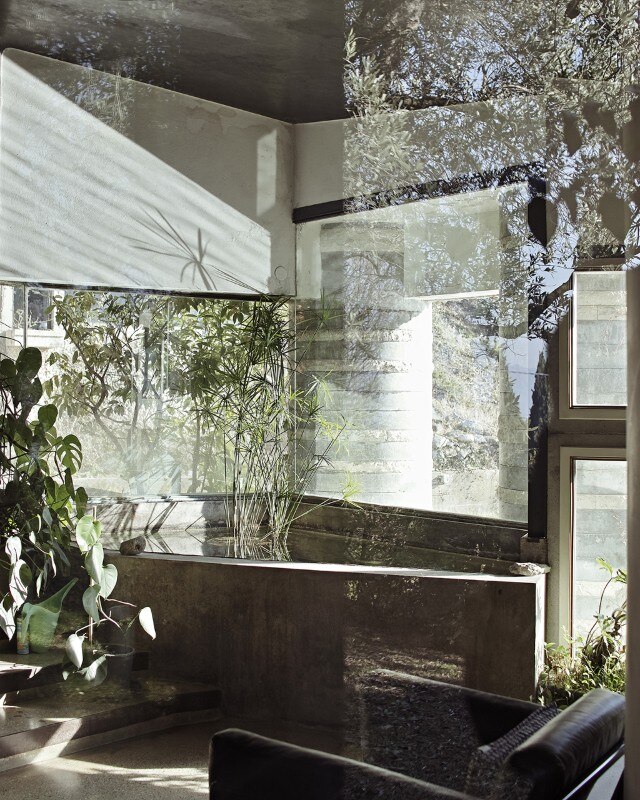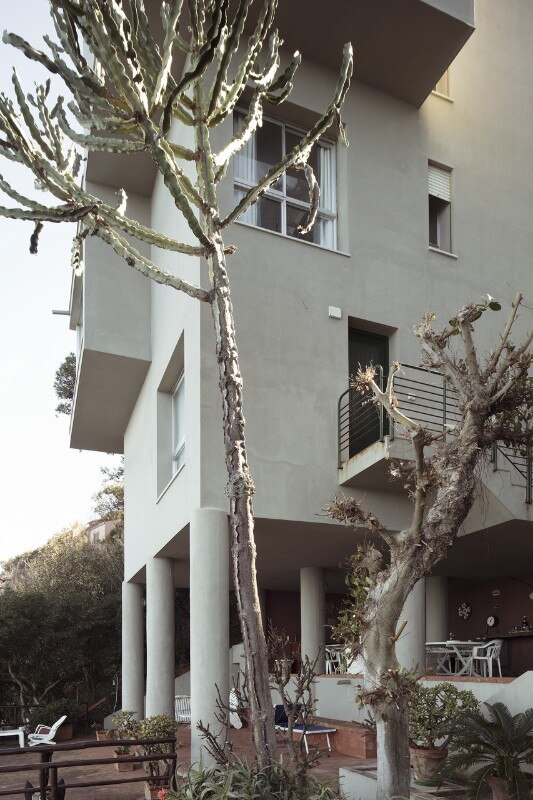The excitement produced by the inauguration, on October 14, 2021, of the large-scale exhibitions dedicated to the masters Raymond Depardon and Saul Steinberg should not obscure the three remarkable architecture shows that Triennale Milano hosts during these weeks. “Carlo Mollino. Hyperformal allusions” (curated by Marco Sammicheli), “Pietro Lingeri. Abstraction and Construction” (curated by Gabriele Neri) and “10 Journeys through Italian architecture” (curated by Matteo Balduzzi, Alessandra Cerroti and Luciano Antonino Scuderi) are different for their contents and scale, independent projects that deserve to be presented as such. Nonetheless, their visit in a sequence is recommended, as it fully emphasizes the chronological, thematic and aesthetic intersections between these three paragraphs of the broader narration of 20th century Italian architecture.
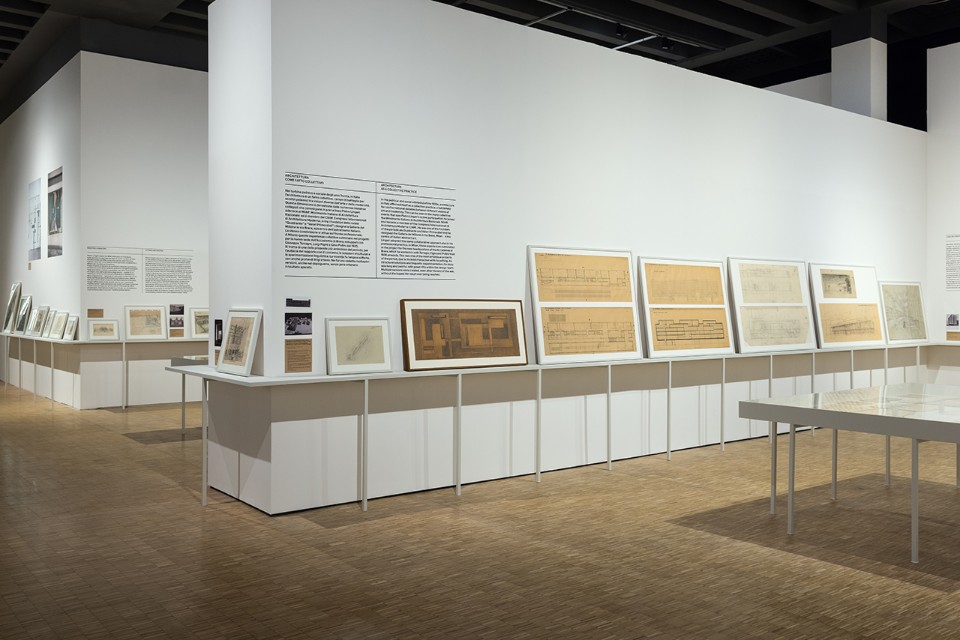
“Hyperformal allusions” offers a reinterpretation of the figure of Carlo Mollino revolving around the microhistory of the sitting room furnishings that he designed for Casa Albonico in Turin (1944-1946). Their deposit on loan at the Triennale’s Museo del Design Italiano, following their timely rescue from an ongoing export procedure, is the occasion to reflect on a beloved but also often misinterpreted protagonist, investigated here in his fruitful links with the fields of craftsmanship and art. The installation project by bunker arc gives up any unlikely fake reconstruction, but rather de-contextualizes the suite and deconstructs it in its single elements. The latter engage in a dialogue based on different rules than those which associated them in the domestic space.
The very essence of the white box containing the exhibition is challenged, as explained by Carlo Gandolfi: “The Cubo suffers from its continuity with the staircase of honor, which is a full-fledged urban space, a crowded, noisy and bright one. Our design strategies, which draw inspiration more from the field of theatre than from installations, challenge this relation conceptually and practically. The hall is reinvented as a dark space, thanks to the partial screening of its skylight, and a muffled space, due to its almost integral black finishing. Its symmetrical configuration is jeopardized by decentralizing its entrance from the existing portal, and the interior is protected and articulated by new curvilinear partitions. These and other solutions, such as the mirrored podiums, adds up to the estrangement and the staging of these fragments of a ‘Mollinian archaeology’, as we call it”.
Gabriele Neri, who recently curated the interesting retrospective about Vico Magistretti, also at the Triennale, now focuses on Pietro Lingeri. “Abstraction and construction” is the first moment of synthesis and public sharing of the digitalization process of the Como-born architect’s archives, which he is directing. While he is known above all for his collaborations, first and foremost with Giuseppe Terragni, Lingeri should be no means be reduced to his 1930s rationalist period. As Neri highlights, “a before existed, filled with references to historicism, baroque architecture and the Milanese ‘Novecento’ movement, and an after followed, an afterwar of new issues and new challenges. They need to be rediscovered to integrally rebuild the continuum that Lingeri has produced over more than five decades”.
His works are presented through a diachronic approach, described through period materials, photographed by Filippo Romano’s and Mattia Balsamini’s contemporary lenses, captured in the reinterpretations of such artists as Lisa Borgiani and even observed in the social dimension – for instance the Villa Leoni in Ospedaletto di Ossuccio (1938-1944), today available on Airbnb as a holiday home and advertised as photoshoot location. Models and images of a few contemporary buildings by David Chipperfield, Herzog & de Meuron, Onsitestudio – also in charge of the installation – and Alessandro Scandurra confirm the persistence of some quintessentially modern themes explored by Lingeri, for instance the reflection on the structural frame, in the research of some educated architects of our time.
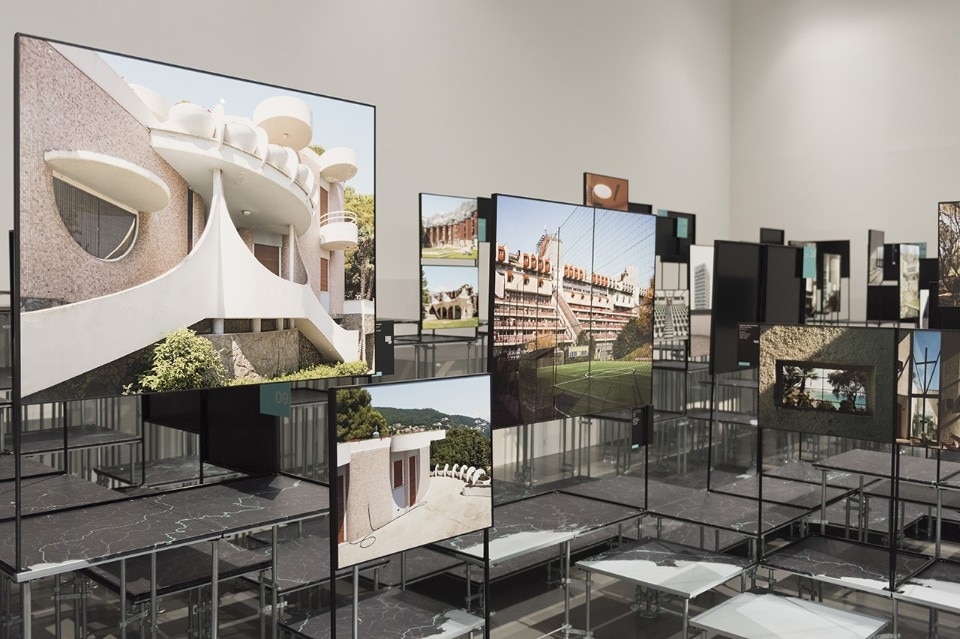
A modern Italy, as well as a late modern and postmodern one, is pictured by the more than 100 photographs included in “10 Journeys through Italian architecture” – it must be said, though, that they merely manage to surface from the jungle of metal frames of Studio Folder’s installation. They form quite an original second half of the 20th century, in part well preserved and in part bruised, also made of empty pools, broken tiles, cracked concretes and faded plasterworks. It’s a still evolving landscape – the most recent works date from the years 2010 – comprising several one-of-a-kind, heroic architectures, that the collective presentation positively resituate as ordinary parts of a larger built environment.
The exhibition is the result of the second campaign promoted by the Italian Ministry of Culture to feed the digital platform Atlante Architettura Contemporanea, online since 2018. The project, a virtuous example of public investment on photography, was launched with the outspoken goal to “map and disseminate the knowledge of Italian architecture from the second half of the 20th century to a wide and non-specialist audience, through the photographic language”. The echos of the great photographic missions from the 1980s, such as the French government’s Mission photographique de la Datar and Luigi Ghirri’s artistic project Viaggio in Italia, resonate in these words. Similarly to their illustrious predecessors, the journeys presented at the Triennale are a choral enterprise on the threshold between the shared goal to document more than 250 architectures and the modes of artistic expression of each of the ten involved photographers.
One of them is Allegra Martin, who takes to Triennale the images of two complexes by Mario Galvagni – the compound of Torre del Mare in Bergeggi (since 1954) and the Giomein 2 apartments building in Valtournenche (1964-1967). “I interpreted this commission with the uttermost sense of responsibility” Martin recounts. “In fact, the Ministry entrusted us with a ‘mission’, if you like, in two regards. The mission to make this heritage of 20th century Italian architectures understandable, readable also for a non-specialist audience and the mission to constitute an archive, which will be a source and a reference for those studying these topics in the future. These circumstances also influenced my choices on a technical plan: differently from my current practice, I decided to use the most common film, the 35 mm, which thanks to its panoramic format allows to include in the frame as much information as possible”.
- Exhibition:
- Carlo Mollino. Hyperformal allusions
- Location:
- Triennale Milano
- Curated by:
- Marco Sammicheli
- Installation design:
- bunker arc / Carlo Gandolfi – Roberto Molteni
- Dates:
- September 4 – November 7, 2021
- Exhibition:
- Pietro Lingeri. Abstraction and Construction
- Location:
- Triennale Milano
- Curated by:
- Gabriele Neri
- Installation design:
- Onsitestudio
- In collaboration with:
- Elena Lingeri, head of the Pietro Lingeri Archive
- Dates:
- October 8 ottobre – November 21, 2021
- Exhibition:
- 10 Journeys through Italian architecture
- Location:
- Triennale Milano
- Curated by:
- Matteo Balduzzi, Alessandra Cerroti, Luciano Antonino Scuderi
- Photographs by:
- Roberto Boccaccino, Marina Caneve, Davide Cossu, Louis De Belle, Luca Girardini and Marco Zorzanello, Paolo Lindozzi, Allegra Martin, Simone Mizzotti, Flavia Rossi, Alberto Sinigaglia
- Dates:
- October 1 – November 7, 2021


